Axis of collusion: The fragile Putin-Xi partnership
Abstract
The close relationship between Russian President Vladimir Putin and Chinese President Xi Jinping is driving what many Russian officials call a developing Sino-Russian alliance. Major achievements have resulted from what the two presidents can accomplish through a top-down approach. However, positive portrayals in official media and some cooperation in diplomatic and military realms have not been accompanied by economic and societal linkages that could produce “thick” connections. Differences over geostrategic, economic, and regional issues and in cultural values have caused some elites and social groups in both countries to express concerns about the growing costs of the partnership. The COVID-19 pandemic has exacerbated these problems, leading a growing number of Russian analysts to say that the Sino-Russian relationship has peaked.
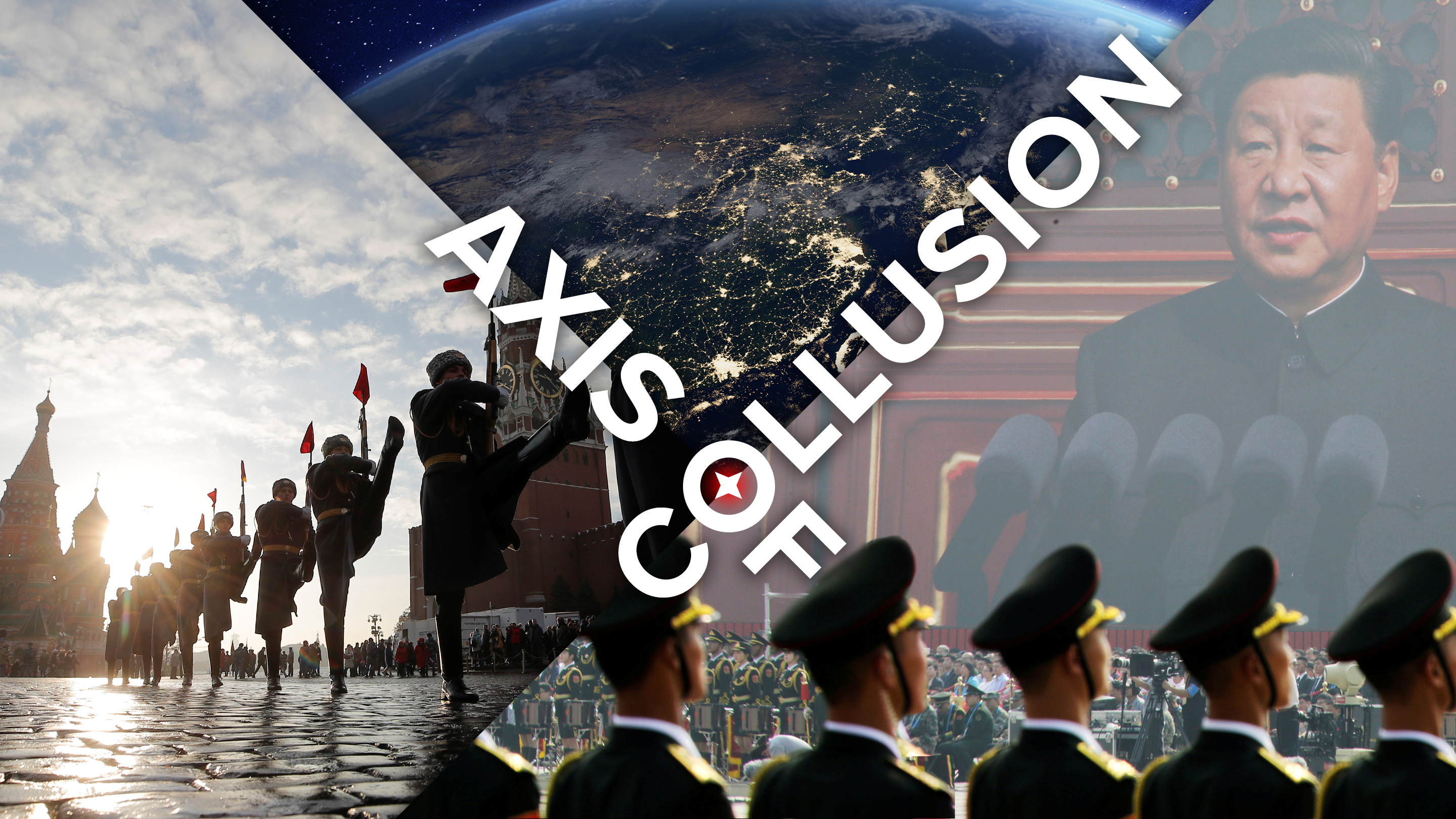
Are China and Russia becoming allies? Rhetoric from Russian President Vladimir Putin and his Chinese counterpart, Xi Jinping, has convinced many analysts that formal ties are the next logical step. Driven by opposition to perceived US hegemony, the two leaders meet frequently, stimulating cooperation on a range of international policy and security issues. Joint military exercises have become a regular occurrence.
The rush to proclaim a budding alliance is surprising. The high point in relations was in the 1950s, and that degree of one partner providing assistance to the other nation has not been matched since.1I. V. Turitsyn and D. A. Turitsyn, “Rossiisko-kitaiskoe sotrudnichestvo v bankovskoi sfere: istoricheskii opyt i realii epokhi tsifrovizatsii [Russia-China cooperation in the banking sphere: Historical experience and reality in the digital era],” Voprosy Istorii 1 (2021): 133. https://www.elibrary.ru/item.asp?id=44600882. Russia and China did not develop close ties between Mikhail Gorbachev’s visit to Beijing in May 1989, on the eve of the Tiananmen Square massacre, and Putin’s annexation of Crimea in March 2014. Xi’s first foreign trip was to Russia in March 2013, helping Putin and Xi to identify common goals. Serious collaboration began with Putin’s “pivot to Asia” in 2014, essentially a pivot to China.
Putin and Xi tout significant progress in the diplomatic and military realms they control. Russians frequently talk of an alliance; Chinese officials have not used the term. Geopolitics is important, yet it is subject to change.
Western sanctions in response to Russia’s annexation of Crimea and other aggressive behavior initially generated enthusiasm that the relationship between Russia and China would expand and flourish. Putin and Xi continue to meet/talk frequently, yet geopolitical complexities and economic realities for a China fully integrated into global supply and production chains have magnified multiple challenges. Far from forging an alliance, sanctions are demonstrating the limits of a partnership based on collusion between two autocrats.
This paper begins with the top-down partnership driven by the two leaders, noting its scope, limits, and growing concerns among elites and the public in both countries. The remainder of the paper places top-down accomplishments in context, examining serious imbalances in the relationship. Cooperation requiring bottom-up activity by business, epistemic communities, and social groups has proven elusive. Russians have been frustrated by limits to technology cooperation, difficulties in the seemingly promising energy relationship, low levels of Chinese investment in Russia’s real economy and regional development, disappointments in developing transportation corridors, and weak cooperation in shifting trade to national currencies or creating an alternative international payments system. The conclusion suggests that “axis of collusion/connivance” may be a more appropriate description of the relationship.
Section One
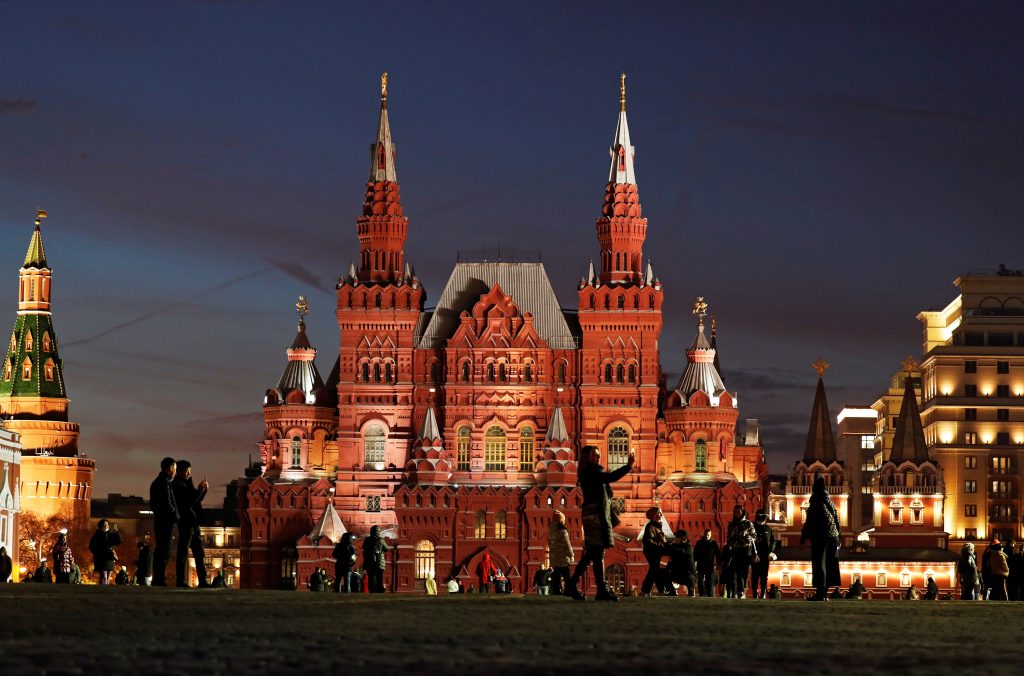
Russia must finally decide which it prefers—to become an ‘industrial appendage’ of Europe for a time or a raw-materials appendage of China forever.”
People take pictures in Red Square amid the outbreak of the coronavirus disease (COVID-19) in Moscow, Russia October 25, 2021. REUTERS/Shamil Zhumatov
The limits of a top-down partnership
Putin and Xi share the view that Gorbachev’s reforms were a disaster and the demise of the USSR an avoidable tragedy. They are determined to prevent a repetition. Bobo Lo’s “axis of convenience” was a valuable paradigm during Putin’s second term; a deepening relationship, genuine axis, or growing alliance became the dominant discourse by late 2019.2See extended footnote 2. This continued during the COVID-19 pandemic despite diminishing economic cooperation. While providing an important picture of leadership support for the relationship, these accounts say less about its depth.
Discussions of the Sino-Russian relationship frequently fail to view it in the context of China’s broader diplomatic and economic outreach. Russians boast that on June 5, 2019, the “strategic partnership” became a “comprehensive strategic partnership of coordination for a new era.” The Clinton administration discussed a strategic partnership with China in 1997-98. China had established strategic partnerships with all five former Soviet Central Asian republics by 2014.3Joshua Kucera, “With Turkmenistan, China Now Has ‘Strategic Partnerships’ With All Five Central Asian States,” Eurasianet, May 13, 2014, https://eurasianet.org/with-turkmenistan-china-now-has-strategic-partnerships-with-all-five-central-asian-states. Several of these have added more adjectives. In May 2017, China and Pakistan agreed to strengthen the security, economic, and infrastructure aspects of their “all-weather strategic cooperative partnership.”4Meng Yaping, “China, Pakistan vow to enhance all-weather partnership,” CGTN, April 6, 2017, https://news.cgtn.com/news/3d457a4d314d7a4d/share_p.html.
At his June 2019 meeting with Xi, Putin claimed, “Today, we maintain very deep and wide-ranging relations with China. We don’t have such relations with any other country.” Xi said: “Russia is not only our largest neighbor and a comprehensive strategic partner, but also one of the most important and most prioritized partners [emphasis added] in all areas of cooperation.5”Yohei Ishikawa, “Russia’s cozy economic ties with China are not all they seem: Moscow chafes at junior partner status in trade fully dependent on oil and gas,” https://asia.nikkei.com/Spotlight/Comment/Russia-s-cozy-economic-ties-with-China-are-not-all-they-seem. NikkeiAsia, (2019), July 4. Cf N.I. Bedareva, “Diplomatiia partnerstva KNR: urovni partnerskikh otnoshenii [The Chinese People’s Republic Partnership Diplomacy: Levels of Partnership Relations],” Problemy dal’nogo vostoka, 2 (2019): 114–25. https://www.elibrary.ru/item.asp?id=38189941.
The semantic difference is crucial. The Chinese side has consistently rebuffed Russian proposals for stronger formal ties.
Some policies the two leaders are able to implement directly are succeeding. Both presidents want their nations to have more influence in international institutions, though Putin and Xi differ in their views of the international system. Xi wants acceptance of China playing a greater role in the existing system, with suitable adjustments. Putin would prefer a more extensive rebalancing.6Andrej Krickovic, “The Symbiotic China-Russia Partnership: Cautious Riser and Desperate Challenger,” Chinese Journal of International Politics, 10 (3) (2017): 299–329, https://academic.oup.com/cjip/article/10/3/299/4060655.
Both regimes spread disinformation and deploy cyberwarfare.7See extended footnote 7. Their diplomats support common positions on many issues at the United Nations and other international organizations, although it is difficult to identify issues where either “partner” has done more than remain silent when they differ.
In July 2017, Putin awarded Xi the Order of St. Andrew, the highest honor for service to the Russian state, in recognition of the Chinese president’s work benefitting Russian and Chinese citizens. That same month China established a gold necklace “Friendship Medal” as its highest honor for foreigners. The first recipient was Putin in June 2018.8Adam Pasick, “Xi Jinping gave Vladimir Putin a giant gold ‘best friend’ necklace,” Quartz, June 8, 2018, https://qz.com/1300974/chinas-xi-jinping-gave-russian-president-vladimir-putin-a-best-friend-necklace/. While this can be viewed as evidence of the two presidents’ close relationship, Xi may be stroking egos. Xi is putting on a good show of partnership while the long-term development support Russia hopes to gain from the relationship remains elusive.
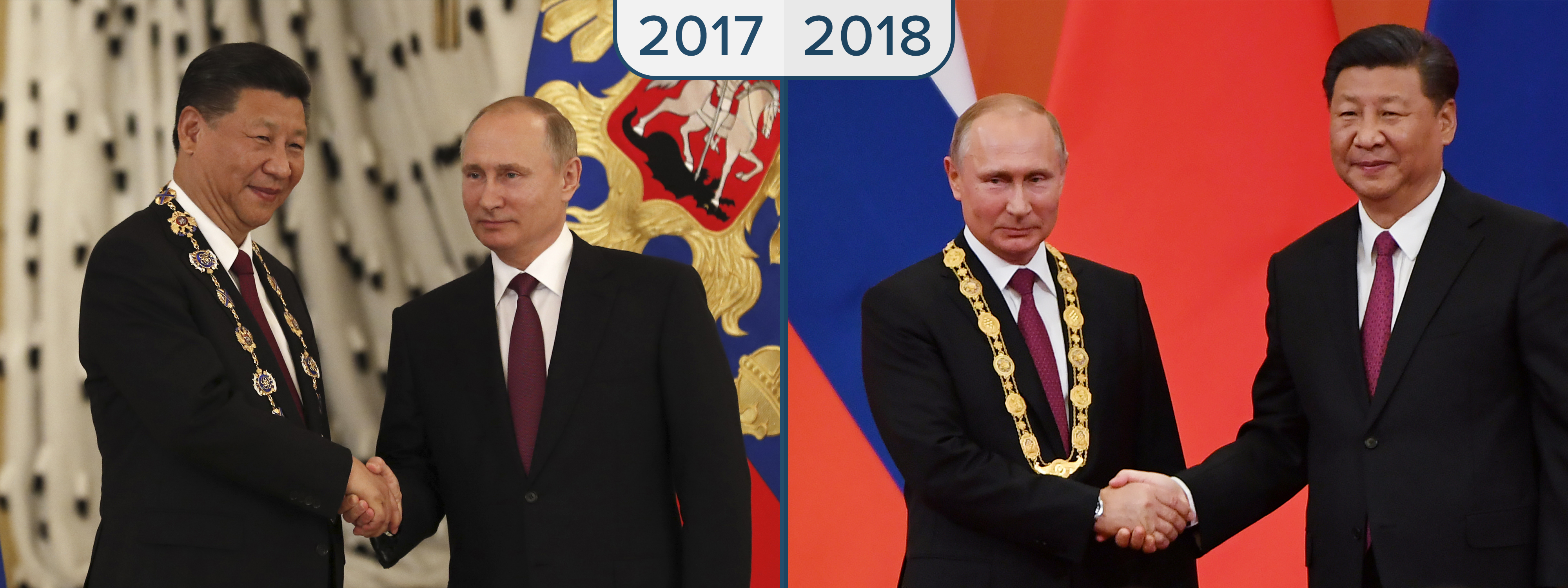
Left: Russian President Vladimir Putin (R) shakes hands with his Chinese counterpart Xi Jinping after awarding him with the Order of St. Andrew the Apostle the First-Called during a meeting at the Kremlin in Moscow, Russia July 4, 2017. REUTERS/Sergei Ilnitsky/Pool | Right: Chinese President Xi Jinping (R) congratulates Russian President Vladimir Putin after presenting him with the Friendship Medal in the Great Hall of the People in Beijing, China June 8, 2018. Greg Baker/Pool/via REUTERS
It is hardly a challenge for autocrats to support internet sovereignty and noninterference in internal affairs. Specific geopolitical issues are more problematic. Even in priority areas of diplomatic and military cooperation, potential cleavages abound. China has not recognized Abkhazia or South Ossetia as independent countries, nor has it endorsed Russia’s annexation of Crimea. Disagreements are downplayed, but the partnership has not yet faced a serious test. Central Asia, India, Xinjiang, Taiwan, COVID-19, or leadership change in either country are among the issues that could expose significant fault lines.
While Russian leaders purport to understand China’s reluctance to legitimize separatism by endorsing the annexation of Crimea, they are less comfortable with Chinese economic ties with Ukraine. China purchases food from Ukraine, aiding its economy. Russia might view the growing Chinese economic relationship with Ukraine as preferable to greater European or US investment there but losing access to crucial military equipment is another matter.
In 2019, China appeared on the verge of acquiring Motor Sich, a major Ukrainian producer of helicopter and aircraft engines. Russian reaction was muted, perhaps because the enterprise had been covertly selling equipment to Russia despite sanctions and the ongoing military conflict. The United States intervened, forestalling the Chinese purchase. Motor Sich has been nationalized. Chinese owners might have allowed sales to Russia to continue. Ukraine’s government will not.9See extended footnote 9.
Russia continues to upgrade economic and military connections with Vietnam despite that country’s war with China in 1979 and ongoing tensions over the South China Sea.10Parashanth Parameswaran, “Defense Minister Trip Puts Russia-Vietnam Security Ties into Focus,” Diplomat, February 12, 2020, https://thediplomat.com/2020/02/defense-minister-trip-puts-russia-vietnam-security-ties-into-focus/. Vietnam’s defense minister spent a week in Russia in February 2020.
Putin and Xi extended the 2001 China-Russia Treaty of Good-Neighborliness and Friendly Cooperation at the end of June 2021. It involves mostly low-hanging fruit, based on memoranda of understanding (MOUs). One area where Xi may be reversing Mao Tse-tung’s policy involves the four islands (Northern Territories) Russia seized from Japan at the end of World War II.11Katsuji Nakazawa, “Analysis: Like ’64, China enters Japan-Russia row at Tokyo Games,” Nikkei Asia, August 5, 2021, https://asia.nikkei.com/Editor-s-Picks/China-up-close/Analysis-Like-64-China-enters-Japan-Russia-row-at-Tokyo-Games. Zhao Lijian, a Chinese Foreign Ministry spokesperson and leading “wolf warrior,” described it as a bilateral issue, but added that “the outcomes of the victorious anti-fascist war should be earnestly respected and upheld.”12The 2015 Chinese film “Wolf Warrior” features a Chinese hero who leads a special-operations force in subduing mercenaries led by an American in Africa and Asia. The term has been used to characterize Chinese diplomacy after a meeting in late 2019 where China’s Foreign Minister Wang Yi instructed diplomatic personnel to be more assertive. Wang demanded they show a “fighting spirit” in response to criticism from foreigners. As the incident described further below indicates, “foreigners” includes Russians. This may simply be a way to put pressure on Japan, but it could augur a policy change.
Putin and Xi have used their authority to order joint military exercises. These maneuvers represent significant cooperation, yet often reflect differing priorities.13Minnie Chan, “China-Russia ties: ‘no plans for military alliance’ to take on US,” South China Morning Post, March 2, 2021, https://www.scmp.com/news/china/diplomacy/article/3123776/china-russia-ties-no-plans-military-alliance-take-us. The joint exercises receive enormous attention, as these leaders intend.14Mathieu Boulègue, “Russia’s Vostok Exercises Were Both Serious Planning and a Show,” Chatham House, September 17, 2018, https://www.chathamhouse.org/expert/comment/russia-s-vostok-exercises-were-both-serious-planning-and-show. They are designed to maximize the psychological impact on NATO nations.15See extended footnote 15.
Thus far, the military cooperation remains mutually beneficial, though China is becoming the more important arms producer. Russia already has sold most of its advanced systems to China: the Su35 fighter plane, S-400 missile defense system, and is helping China become the third country with early warning technology.16Vasily Kashin, The Current State of Russian-Chinese Defense Cooperation, CNA, August 2018, https://www.cna.org/CNA_files/PDF/DOP-2018-U-018184-Final.pdf. Russia now sells more arms to India than to China, a source of tension. China cooperates closely with Pakistan.17Rajeswari Pillai Rajagopalan, “The China-Pakistan Partnership Continues to Deepen,” Diplomat, July 9, 2021, https://thediplomat.com/2021/07/the-china-pakistan-partnership-continues-to-deepen/.
Joint exercises facilitate personal contact between Russian and Chinese military leaders and have become increasingly sophisticated, emphasizing interoperability.18Catherine Wong, “China-Russia military drill makes room for combined force against US,” South China Morning Post, August 13, 2021, https://www.scmp.com/news/china/diplomacy/article/3145010/china-russia-military-drill-makes-room-combined-force-against. At the same time, the maneuvers demonstrate competing emphasis. China prefers to avoid provocative activity in the European region. The October 2021 joint naval demonstration focused on Japan.19Julian Ryall, “Chinese, Russian navies jointly traverse Japan strait regarded as high seas after military drill,” South China Morning Post, October 19, 2021, https://www.scmp.com/week-asia/politics/article/3152860/chinese-russia-navies-jointly-traverse-japan-strait-regarded.
Not everyone in either Russia or China is comfortable with the partnership.
Changes in control of territories in East Asia between 1858 and 1914
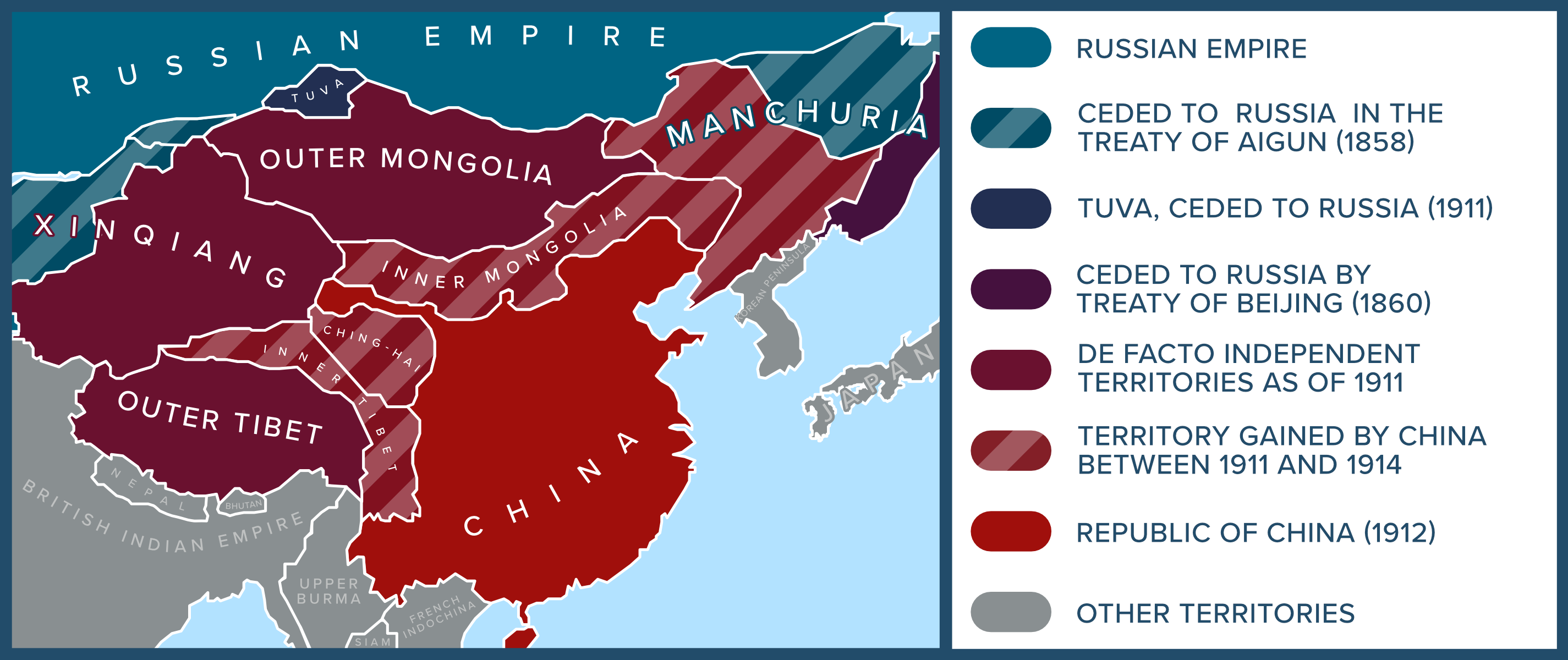
Section two
Pushback by elites and publics
2.1 Elites’ concerns
Individuals in the international affairs and security communities in both Russia and China have reservations about the partnership. Elizabeth Wishnick provides an excellent summary of the range of debate in China. Some Chinese analysts disagree with Russian views on arms control. China would like a greater role in the Arctic. In economic activity, Chinese involved in policy discussions note that China’s participation often causes Russian local governments to become averse to cooperation. Some Chinese expressed concern that ties with Russia could preclude improving relations with the United States post-Trump. Others foresee tensions with Russia over who should lead and whether cooperation might result in supporting policies that could damage China’s interests.20Wishnick, “Sino-Russian Consolidation.” During a 2021 online discussion of the Russia-China partnership, a Chinese specialist on Russia was asked if there were difficulties in the relationship. He responded that he would not say anything about the topic now, but might discuss it in person over lunch.
Discussion on the Russian side has been even more freewheeling. A former first secretary in Russia’s embassy in Beijing, Evgenii Verlin, writes alarmingly about the discourse in Chinese social media demanding the return of as much as 1.5 million square kilometers of territory the Russian Empire seized from China (see maps). Chinese school textbooks shielded by state secrecy laws feature this issue. The Chinese blogosphere portrays Russia as the most abusive of the nineteenth century imperial powers. Posts claim that Russians have failed to develop the economic potential of the lands they stole. China’s highly developed control of social media does not censor these opinions.21Evgenii Verlin, “‘Krym—vash, Sibir’—Nasha’: Podnevesnaia podderzhit vozvrashchenie rossiiskikh ‘utrachennykh’ zemel’ lish’ v obmen na vozvrashcheniie kitaiskikh [‘Crimea is yours, Siberia is Ours’: The Celestial Kingdom supports returning Russia’s ‘lost’ land only in exchange for returning China’s],” Republic, March 16, 2021, https://republic.ru/posts/99606.
Verlin claims that the “nationalists and patriots,” who make up more than 90 percent of China’s population, dream of recovering the “stolen territories.”22See maps He argues that Chinese are already reclaiming the land in forty-nine- and seventy-year leases. Once they finish with the Himalayas and the South China Sea, they will come for Russia’s water. Ties with Europe would be preferable. Despite the Putin regime’s preoccupation with NATO, Europeans make no claims on Russian land.
Verlin’s concerns are reinforced by Colin Thubron’s description of the historical museum in Aihui (formerly Aigun), a place not normally visited by foreigners. Russians are prohibited. A display shows territory north of the Amur River recognized as Chinese in the Treaty of Nerchinsk in 1689 that Russian acquired in the 1858 Treaty of Aigun and 1860 Treaty of Peking.
Territories gained by Russia between 1858 and 1860
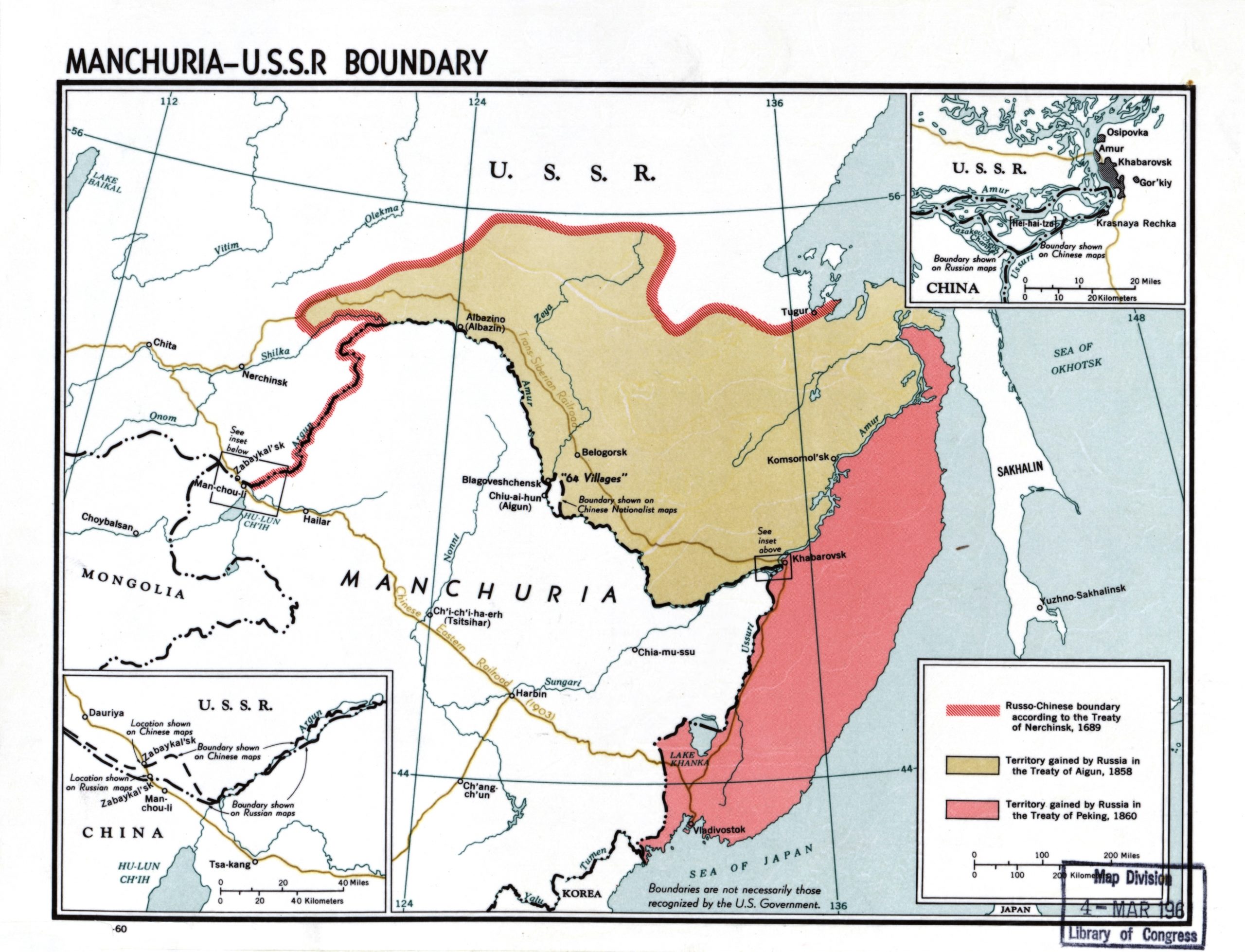
Public domain
Thurbron provides a gruesome description of the massacre of Chinese in Blagoveshchensk during the 1900 Boxer rebellion. The Aihui museum features a cyclorama depicting the slaughter, claiming there were 6,000 victims. Aigun itself was “razed to the ground” by the Russians, and the town is now Aihui.23Colin Thubron, The Amur, 158. Thubron reported hostile stares from Chinese. When Franck Billé visited the museum, a Chinese man hissed that Russians were not allowed there. Billé’s driver explained he is not Russian.24Franck Billé and Caroline Humphrey, On the Edge: Life Along the Russia-China Border, (Cambridge, MA and London, Harvard University Press, 2021): 198.
Thubron’s Chinese companion recounted his own school curriculum instructing him that the Treaty of Aigun, like treaties imposed on China by Great Britain and Japan, was forced on an unwilling China and therefore not valid. Only the 1689 Treaty of Nerchinsk represents a valid mutual agreement.25Colin Thubron, The Amur, 159.
A decade earlier, Verlin co-authored an article laying out a proposition that has been reiterated by a number of Russian economic policy analysts: “Russia must finally decide which it prefers—to become an ‘industrial appendage’ of Europe for a time or a raw-materials appendage of China forever.”26Evgenii Verlin and Vladislav Inozemtsev, “Russia-China: Time for a Course Correction,” Russian Politics & Law, 49 (6) (2011): 54–73, https://www.tandfonline.com/doi/abs/10.2753/RUP1061-1940490603.
Russian officials and some policy analysts praise the relationship; others directly question the wisdom of tying Russia’s foreign policy to China, accepting junior partner status, or acquiescing to China’s growing dominance in Central Asia.27See extended footnote 27. China has become less deferential to Russia, increasingly assuming security as well as economic roles in Tajikistan and elsewhere.28Ian J. Lynch, “ What Are the Implications of China’s Growing Security Role in Central Asia?: China’s rise in Central Asia has been swift,” Diplomat, June 3, 2020, https://thediplomat.com/2020/06/what-are-the-implications-of-chinas-growing-security-role-in-central-asia/. China’s Belt and Road Initiative (BRI) is viewed by many as infringing on Russia’s sphere of influence, extending Chinese military and diplomatic power and providing economic benefits to China while driving other nations into debt.29Andrew Chatzky and James McBride, “China’s Massive Belt and Road Initiative,” Council on Foreign Relations, January 8, 2020, https://www.cfr.org/backgrounder/chinas-massive-belt-and-road-initiative; Jonathan E. Hillman, The Emperor’s New Road: China and the Project of the Century (New Haven and London: Yale University Press, 2020), 61–78. China has increasingly reneged on providing anticipated economic support to Russia.
High-handed behavior by some Chinese diplomats has exacerbated Russian concerns. Nezavisimaia gazeta editors reported a visit by Gou Yonghai, the Chinese press attache in Moscow, who threatened serious repercussions unless they retracted a story about problems in the Chinese economy. The article had discussed “unprecedented challenges” facing China, noted the economic slowdown, and stated that Xi’s attack on the private sector made China’s model unsuitable for Russia.30See extended footnote 30. Others have discussed the flaws in Xi’s “digital dictatorship,” harsh administrative policies, and the threat Xi’s treatment of Xinjiang poses to all of China’s neighbors.31For a broad sample of views in the Russian academic and policy communities see Evgenii Verlin and Alexander Gabuev, “My ego teriaem? Vlast’ liubit Kitai bol’she, chem tekh, kto ego izuchaet (Are we losing it? The authorities love China more than those who study it), Republic Khartlend (2021) Oct. 2. https://republic.ru/posts/101845
In a recent analysis, Charles Kupchan suggested the Sino-Russian relationship is as strong as it was in the 1950s.32Charles A. Kupchan, “The Right Way to Split China and Russia: Washington Should Help Moscow Leave a Bad Marriage,” Foreign Affairs, August 4, 2021, https://www.foreignaffairs.com/articles/united-states/2021-08-04/right-way-split-china-and-russia. Ironically, the current partnership in crucial ways is the inverse of the 1950s relationship. Mao and Nikita Khrushchev were at loggerheads. Despite serious friction at the top, thousands of Soviet specialists helped to develop China’s economy, science and education systems, and the military, including atomic weapons. Thousands of Chinese studied science and technology in the USSR. Putin and Xi put on a show of friendship, but neither country is doing much to advance the other’s development. Accounts reporting the frequent MOUs rarely follow up on the lack of visible results.33For example, Samuel Bendett and Elsa Kania, “The Resilience of Sino-Russian High-Tech Cooperation,” War on the Rocks, August 12, 2020, https://warontherocks.com/2020/08/the-resilience-of-sino-russian-high-tech-cooperation/.
Thin bottom-up linkages remain the weak point in the partnership. Without strong social, economic, and professional ties, it will not be difficult for a future leader to change policy.
The 2020 annual “Round Table” discussion of Sino-Russian relations at the Russian Academy of Sciences assessed accomplishments and difficulties. A. A. Maslov noted:
“There is a gulf between the modest cooperation in the business and economic areas and cooperation in the political sphere, where ties are much closer. It is enough to mention that trade turnover between China and the Russian Federation, despite the American-Chinese trade wars, is six times less than Chinese trade with the USA and barely exceeds the level of Chinese trade with the small countries of Eastern Europe.”34Aleksandr Mokretskii, Tlesh Mamakhamov, and Sergei Uianaev, “Rossiisko-kitaiskie otnosheniia v novuiu epokhu: novye problemy–novye vektory vzaimodeistviia [Russian-Chinese relations in a new era: new problems, new vectors of cooperation],” Problemy Dal’nego Vostoka 4 (2021): 6, https://www.elibrary.ru/item.asp?id=46548772>https://www.elibrary.ru/item.asp?id=46548772. As this manuscript was being formatted, Vladimir Milov published a paper focusing on energy and the economic relationship, reinforcing many of the points made here. Vladimir Milov, “Ambitions Dashed: Why Sino-Russian Economic Cooperation Is Not Working,” Brussels: Wilfried Martens Centre for European Policy Studies, (2021), November. https://www.martenscentre.eu/article-author/vladimir-milov-2/
Many ordinary Russians share the misgivings.
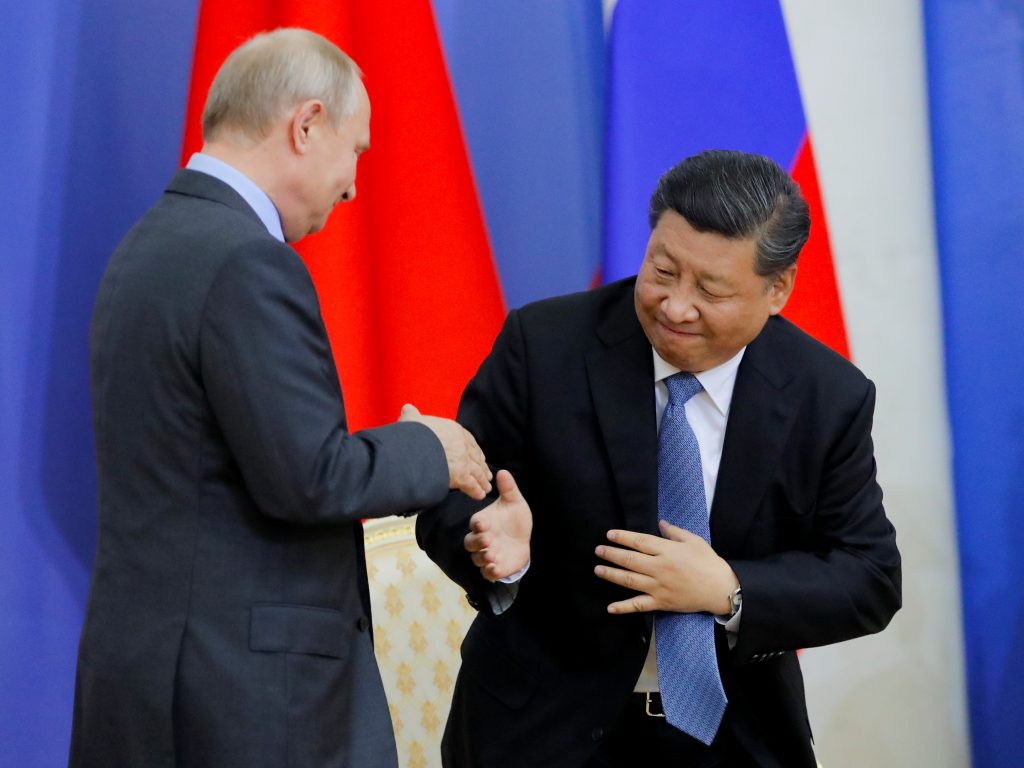
Putin and Xi put on a show of friendship, but neither country is doing much to advance the other’s development.”
Chinese President Xi Jinping, and Russian President Vladimir Putin shake hands during the ceremony of presenting Xi Jinping with a degree from the St. Petersburg State University at the St. Petersburg International Economic Forum (SPIEF) in St. Petersburg, Russia, June 6, 2019. Dmitri Lovetsky/Pool via REUTERS
2.2 Public opinion
Opinion in both countries remains skeptical regarding the relationship. Some Chinese graduate students interviewed in 2010 stated that they would prefer to study in Kazakhstan, where they would blend in more easily, rather than risk encountering hostility in Russia.
Chinese entrepreneurs, familiar with corruption in China, regard the Russian business climate as particularly corrupt and opaque. Many who wish to continue conducting business in Russia would prefer to live in China and visit Russia only when needed.35Harley Balzer and Maria Repnikova, “Migration Between China and Russia,” Post-Soviet Affairs 26 (1) (2010): 1–37. https://www.researchgate.net/publication/250172103_Migration_between_China_and_.
Chinese studying Russian social media found a predominantly negative view of Chinese.36Yan Li and Siui Siantsian, “Ekonomicheskii imidzh Kitaia v rossiiskikh sotsial’nykh setiakh [The economic image of China in Russian social networks],” Problemy Dal’nego Vostoka, 6 (2019): 71–80. https://www.elibrary.ru/item.asp?id=42350916. Russian media reports about China’s response to COVID-19 did not improve Russians’ opinions. Fang Fang’s Wuhan Diary was covered widely in Russian media.37Fang Fang and Michael Berry, Wuhan Diary: Dispatches from a Quarantined City, (New York: Harper Collins, 2020).
Despite much recent hype, educational exchanges represent a small fraction of international study on either side. Unlike in the 1950s, Chinese do not view Russia as the place to study science and technology.38Harley Balzer, “Can Russia Catch Up/Keep Up? Russian Science and Education in Putin’s Fourth Term” in Putin’s Russia: Economy, Defense and Foreign Policy, ed. Steven Rosefielde (Singapore: World Scientific, 2020): 127–97.
Russians living in areas where Chinese have leased land have staged protests. Demonstrations in the Far East get immediate attention. Incidents in places like Chuvashia are less well known.39Sergei Gogin, “Ul’ianovskie deputaty podderzhali proekt stroitel‘stva tsementnogo zavoda v Teren’gul’skom raione. Pochemu eto vazhno [The deputies from Ulianovsk supported the project to build a cement factory in Teren’gul’sk region. Why this is important],” 7x7jornal.ru, September 20, 2017, https://7×7-journal.ru/articles/2017/09/20/ulyanovskie-deputaty-podderzhali-proekt-stroitelstva-cementnogo-zavoda-v-terengulskom-rajone-pochemu-eto-vazhno. Conflicts have arisen over Chinese activity in markets in many regions.
Neither Russians nor Chinese citizens appear to favor armed conflict. Russians were happy to have Crimea again become part of the Russian Federation, but only 20 percent were willing to pay for rebuilding Crimea and fewer than 10 percent thought it worth risking their childrens’ lives.40Harley Balzer, “Public Opinion Paradoxes? Russians Are Increasingly Dubious About the Costs of Putin’s Foreign Policies,” Ponars Eurasia Policy Memo (2019) No. 595, May, https://www.ponarseurasia.org/memo/public-opinion-paradoxes-russians-increasingly-dubious-costs-putins-foreign-policies.
Data from Mikhail Dmitriev’s team revealed a profound shift in Russian public opinion from 2014 to 2019. The “Crimean consensus” supporting aggressive foreign policy has been replaced by concern over declining living standards and the costs, financial and human, of foreign military intervention. If Russians are embracing “post-materialist values,” including self-realization and citizen involvement in decision-making, China is not a suitable partner.41Sergei Belanovsky, Mikhail Dmitriev and Anastasia Nikolskaya, “Priznaki fundamental’nykh svidgov v massovom soznanii rossiian [Signs of fundamental shifts in the mass consciousness of Russians].” Obshchestvennye nauki i sovremennost’, 1 (2019): 5–18. https://ras.jes.su/ons/s086904990003939-4-1.
Maintaining and strengthening the partnership will require that both sides perceive genuine benefits. Imbalances between the two nations make this difficult.
section three
Frustrating imbalances
My teaching and research in the past two decades has focused on how China managed to fix Soviet-type economic, education, and science-technology systems while Russia has failed.42Harley D. Balzer, “Russia and China in the Global Economy,” Demokratizatsiya, 16 (1) (2008): 37–48, https://www.researchgate.net/publication/250209942_Russia_and_China_in_the_Global_Economy. Despite problems stemming from the “Xi change” since 2013, China has become the world’s second-largest economy, while Russia has declined.43Harley D. Balzer, “What Have We Learned, and Not Learned, from a Quarter-Century of Transition?” ASEEES NewsNet, 56 (5) (2016): 1–5, http://www.ighome.com/search/?q=ASEEES%20balzer%20what%20have%20we%20learned. China is Russia’s most important trade partner, while Russia remains a relatively minor player in China’s economic development. The imbalance makes it crucial for Xi to cultivate his friendship with Putin, but returns are diminishing for both partners.44In a recent article, Igor Denisov and Alexander Lukin suggest that rather than bandwagoning or balancing, the two regimes are hedging. Igor Denisov and Alexander Lukin,”Russia’s China Policy: Growing Asymmetries, Russian Politics, 6: 4 (2021): 531-50.
Since invading Ukraine, Russia has become increasingly reliant on China for technology, investment, and support in challenging the United States’ global economic influence. It has been disappointed in all of these areas.
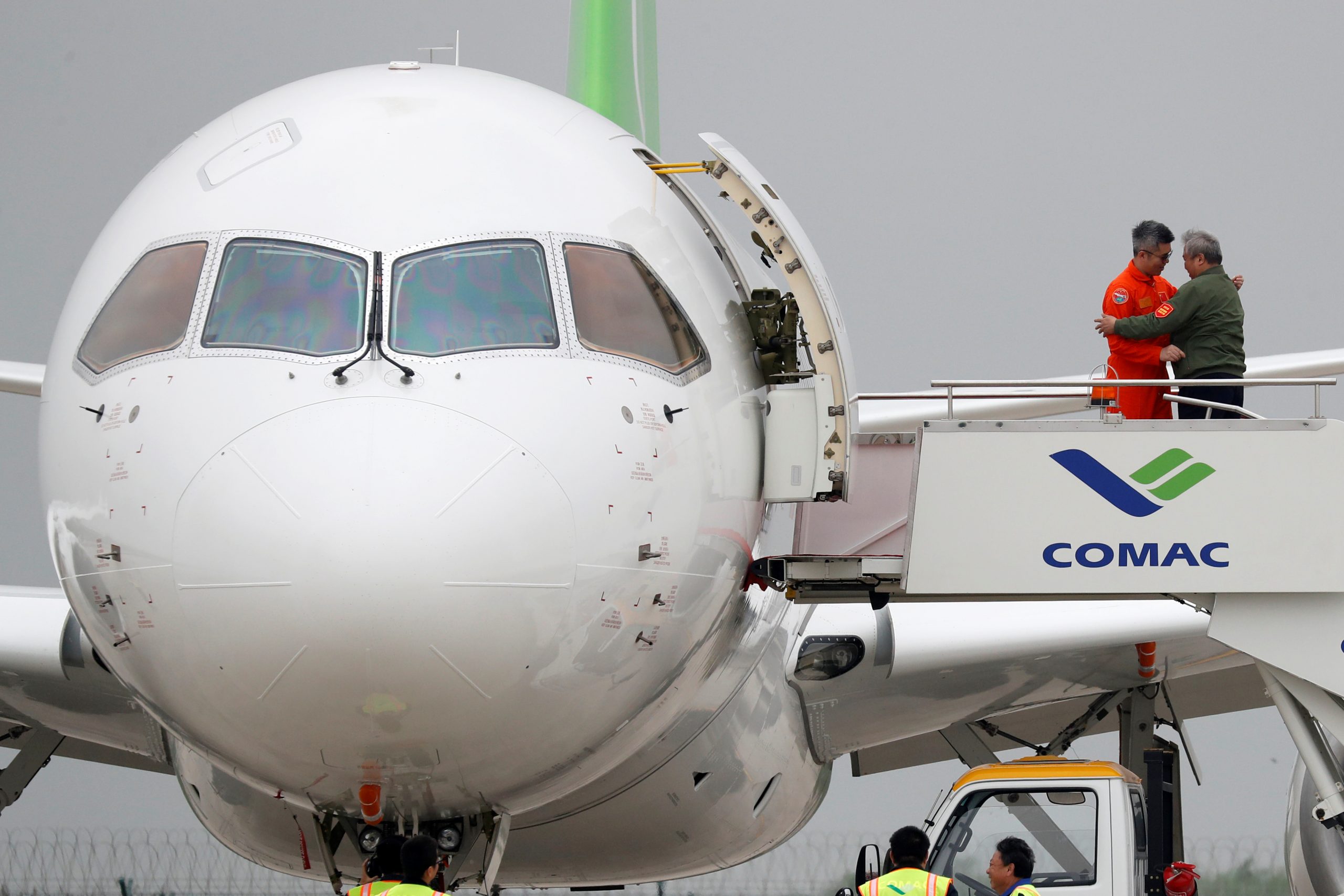
A flight crew member, left, is embraced after disembarking from a Chinese C919 passenger jet after its first flight at Pudong International Airport in Shanghai, Friday, May 5, 2017. REUTERS/Andy Wong/Pool
3.1 Both China and Russia depend on imported technology
Russian leaders hoped that China’s position as the global manufacturing hub would make it an important partner in technology development. They ignored the extent to which China itself relies on importing advanced technology. Given Russia’s overwhelming dependence on imports, this generates serious problems. An article by Georgii Bovt attributes much of China’s success to theft of intellectual property.45Georgii Bovt, “’Bdi! Ibo kitaiskii shpion khiter i kovaren!’ Kak Kitai stanovitsia mirovoi tekhnologicheskoi sverkhderzhavoi (‘Watch out! Because the Chinese spy is clever and cunning!’ How China is becoming a global technological superpower),” Republic, Oct. 8, (2021). https://republic.ru/posts/101922
Despite massive investment and hard work, China remains at least two generations behind the United States, Europe, and Japan in many critical high technologies. China imports about 80 percent of the chips for its auto engines, and nearly all the chips produced in China depend on imports. High-end sensors are 80 percent imported. More than 80 percent of advanced medical equipment is imported. More than 90 percent of Chinese computers use Windows or Apple’s OS X operating systems.46Nina Xiang, “Foreign dependence the Achilles’ heel in China’s giant tech sector,” Nikkei Asia, January 31, 2021, https://asia.nikkei.com/Opinion/Foreign-dependence-the-Achilles-heel-in-China-s-giant-tech-sector. China imports 40 percent of the technology for its new narrow-body C919 aircraft.47Yusuke Hinata and Takashi Kawakami, “China develops passenger jet, but 40% of parts suppliers are overseas,” Nikkei Asia, Oct. 2, 2021. https://asia.nikkei.com/Business/Aerospace-Defense/China-develops-passenger-jet-but-40-of-parts-suppliers-are-overseas. China’s dependence on imports and sanctions make Sino-Russian cooperation in aviation doubtful.
China has 228 supercomputers; Russia just four. Yet China has needed Russian help with the software for some of its supercomputers. Russia and China both export basic machine tools and import sophisticated equipment.
High technology represents less than 15 percent of Russia’s imports from China. There is little serious technology cooperation. Joint technoparks and laboratories announced in MOUs fail to produce tangible results. Russian scientists and talented educators are increasingly moving to China.48Mokretskii, Mamakhamov and Uianaev, “Rossiisko-kitaiskie otnosheniia, 6.
Russia’s lack of significant economic benefits is clearly visible in the energy sector.
3.2 Little positive energy from the energy partnership
Hydrocarbons and other minerals constituted 76 percent of Russian exports to China in 2019, timber another 8 percent.49Ishikawa, “Russia’s cozy economic ties.” The limited examples of Russians selling technology have been military equipment and “turnkey” nuclear power plants that likely will be copied.
Given the importance of oil and gas exports to China, price is a crucial consideration. Russia has been disappointed repeatedly. For a decade, China rejected Russian price demands while developing oil and gas pipelines from Central Asia, freeing Turkmenistan and Kazakhstan from dependence on Russian pipelines to the west. When Russia “pivoted” to Asia it accepted a much lower price—well below what it charged in Europe—for sales to China.50This was confirmed in a conversation with one of the Russian lawyers who participated in the negotiations. Price differences have fluctuated over time.
At their meeting in May 2014, Putin and Xi presided over the signing of a natural gas deal that had been in negotiations for a decade. Most hydrocarbon agreements with China have been far from a windfall for Russia. The saga of the major oil and gas pipelines illustrates the ways China has dominated the relationship.
Liquified natural gas export prices
Chinese authorities have consistently sought to diversify their suppliers. Pipelines from Russia allow China to hedge against possible interruptions of maritime supplies but are not essential. During periods of lower energy prices in 2008-09 and again after 2014, China has played hardball with Russia on financing and pricing. China canceled an agreement to buy a 14 percent stake in the Russian energy firm Rosneft and reneged on contributing $25 billion to build the Power of Siberia pipeline.51finanz.ru. “Kitaiskie investory begut iz Rossii [Chinese investors are running away from Russia],” April 8. 2021, https://www.finanz.ru/novosti/aktsii/kitayskie-investory-begut-iz-rossii-1030285975. China has become a global leader in wind and solar power development.52Yukinori Hanada, “China’s solar panel makers top global field but challenges loom: Eight out of the world’s top 10 manufacturers are Chinese, but profits are scant,” Nikkei Asia, July 31, 2019, https://asia.nikkei.com/Business/Business-trends/China-s-solar-panel-makers-top-global-field-but-challenges-loom.
Russia’s price war with the Saudis and the Organization of the Petroleum Exporting Countries (OPEC) in March 2020, at a time of declining global demand, especially from China, added to tensions. During the COVID-19 pandemic, China signaled a desire to renegotiate the already low price for Russian oil. This became less likely with supply chain disruptions in 2021.
In 2021, the Russian energy firm Gazprom for first time revealed data on the cost of Power of Siberia gas for China. In 2020, Russia provided 4.1 billion cubic meters, at an average price of $150.2 per 1,000 cubic meters. Exports to Europe averaged $143 per 1,000 cubic meters. The average price paid by China was slightly higher than that for Europe. Central Asian producers were able to charge more. The average price for Uzbek gas was $180 per 1,000 cubic meters, Turkmen $210, and Myanmar $340. China’s liquified natural gas (LNG) imports from Russia averaged $230 per 1,000 cubic meters. Nigeria and Malaysia were paid $200; Qatar $275.53Kommersant, “‘Sila Sibiri’ v den’gakh: ‘Gazprom’ raskryl tsenu postavok v Kitai [‘Power of Siberia in money: ‘Gazprom revealed the price for supplies to China],” 102, June 16 (2021): 7, https://www.kommersant.ru/doc/4858093.
Given the complications involved with pipelines, the major Sino-Russian gas success story is LNG, supplied to China by the private company Novatek. The gas comes from existing Yamal production facilities not subject to current sanctions.54Thane Gustafson, Klimat: Russia in the Age of Climate Change, (Cambridge, MA and London: Harvard University Press, 2021): 84–89.
Russian and Chinese negotiators discussed Russia providing electricity to China for more than three decades, but could not agree on pricing. An agreement was signed in 2018 for a plant at the Erkovets coal mine near the Chinese border. In 2020, as China curtailed using coal at facilities outside of China, a decision was made to switch the fuel to gas. This made the location at a coal mine less appropriate, and the Erkovets brown coal is not suitable for other uses.55Polina Smertina, “Inter RAO prevrashchaet ugol’ v gaz: Kompaniia mozhet kardinal’no pomeniat’ proekt okolokitaisako elektrostantsii (“Inter RAO” turns coal into gas: The company may fundamentally alter the design for a thermal electrical station near China),” Kommersant, No.37, February 29, (2020): 1 https://www.kommersant.ru/doc/4274242. The Chinese do not appear to have revived the project despite energy shortages in 2021.
If China has failed to provide the anticipated funding for major energy projects, support for other sectors has been even more disappointing.
3.3 China has reduced already meager levels of investment in Russia’s real economy
China is doing little to help diversify Russia’s economy. In discussions about Chinese investing in high technology sectors, the Chinese insist on complete technology transfer, including know-how, full documentation, and samples of all experimental production. Russian patent owners refuse to accept these conditions.56finanz.ru. “Putin poprosil kitaitsev profinansirovat’ modernizatsiiu Rossii [Putin asked the Chinese to finance Russian modernization],” June 8, 2018, https://www.finanz.ru/novosti/aktsii/putin-poprosil-kitaycev-profinansirovat-modernizaciyu-rossii-1026806313. These concerns explain why China provides such a small share of total Foreign Direct Investment (FDI) in Russia, just 1 percent in 2018 and less than 0.5 percent in 2020.57finanz.ru. “Kitaiskie investory begut.”
A thorough account of Russian disappointment with Chinese failure to provide economic support was provided by a Russian financial website in April 2021. The bottom line is that “Seven years of endeavoring to get Chinese business to invest in Russia’s real sector and help finance modernization of infrastructure or at least participate in joint projects has come to nothing.”58Ibid.
The indictment includes:
- The Chinese reneged on extending credit to build the Power of Siberia oil pipeline.
- The Chinese are not willing to share financing for the pipeline delivering gas to China.
- Chinese analysts determined that the “Eurasia” high-speed rail line from Beijing to Berlin via Moscow is not economically viable within China’s Silk Road framework.
- In November 2016, Gazprom CEO Alexey Miller and the China Development Bank agreed on financing for the Amur Gas Plant to provide products to China. In 2021, the Chinese side withdrew from the project, leaving the Russians to pay for the facility.
- Chinese investment in Russia’s real sector has decreased by 250 percent since 2014.
- Total Chinese investment in Russian businesses has decreased from $2.28 billion to $480 million over that period, a fivefold drop.
- Total Chinese FDI represents less than one-half of 1 percent of all FDI in Russia, down from a 1 percent share in 2018. German FDI is nine times greater ($16.6 billion). Cyprus’ FDI (largely round-trip capital) is 68 times greater ($123.4 billion).
- The Bank of China is the sole Chinese bank that has joined the Russian alternative to the SWIFT payments system.
- The Central Bank of the Russian Federation has been making daily transfers in yuan to Russia’s sovereign wealth fund (SWF), ignoring fluctuations in exchange rates.
At some level the Chinese are relishing the inversion of relative economic and industrial positions over the past century. Prior to World War I, Russia was among the imperial powers seizing territory and imposing economic constraints on China. By 1992, China was growing rapidly while Russia was in crisis. The post-Soviet era began with fifteen years of limited cooperation, a short burst of enthusiasm when Western sanctions induced Russia’s pivot to Asia in 2014, and growing disappointment as Chinese refusal to violate sanctions undermines economic cooperation.59Turitsyn and Turitsyn, “Rossiisko-kitaiskoe sotrudnichestvo,” 128.
Beyond energy and agriculture, which account for two-thirds of total Chinese investment, Chinese have shown little interest in investing in Russia.
Percentage of Chinese investment in Russia by sector
In addition to being overwhelmingly in commodities, Chinese investment in Russia is paltry compared with many smaller countries.60Ivan Zuenko, “Russia’s Far East Seeks Partners Beyond China,” Carnegie Moscow Center, March 13, 2020, https://carnegie.ru/commentary/81278. Russians shouted at their Chinese interlocutors about this at a meeting in Irkutsk in 2011.61Author’s personal communication. Since 2014, Russian negotiators have been compelled to be less belligerent, but they are no less irate. Pakistan has received more than four times the amount China has invested in Russia. Chinese investment in most Central Asian nations dwarfs the amount for Russia. Between 2014 and 2018, total Chinese investment in Russia was perhaps $24 billion, though corruption and covert accounting practices make it impossible to know the true number. During these years, Chinese invested $31 billion in Nigeria and $34 billion in Brazil.62Zuenko, “Russia’s Far East.”
Sanctions have complicated the already fraught situation in banking. While Chinese banks have expanded their global reach, they rarely rank among the top 100 players in Russia. The exceptions are driven by “political decisions at the highest level.”63Turitsyn and Turitsyn, “Rossiisko-kitaiskoe sotrudnichestvo,” 132.
Conditions for cooperation with Russian firms have become increasingly more complicated, even for Russian companies that are not on the sanctions list. Vladimir Danilov, head of the Central Bank of Russia (CBR) office in Beijing, complained in September 2018 that the Chinese were adopting an excessively broad interpretation of secondary sanctions.64Irina Badmaeva, “Kitai podderzhal sanktsii protiv Rossii: Banki Podnebesnoi otkazyvaiutsia rabotat’ s otechestvennymi partnerami (China supported sanctions against Russia: Banks in the Celectial Kingdom refuse to work with fatherland partners),” Moskovskii komsomolets, September 16, (2018). https://www.mk.ru/economics/2018/09/16/kitay-podderzhal-sankcii-protiv-rossii.html.
The Chinese and Russian banking sectors have reversed roles within little more than a century. If Russia was the more developed and exploitative imperial power before World War I, China is now the more mature economy, in a position to impose its influence on a weaker neighbor. Yet while the roles of the two countries have changed radically, two Russian analysts find that “the basis for cooperation has remained state interests (in this case mediated by group interests), along with state control of the banking structures.”65Ibid. 133
Russian banks are barely a blip on the screen in China. Meager assets and inadequate staffing have precluded even Russia’s largest banks from establishing full branches. With the sole exception of Foreign Trade Bank (VTB), leading Russian banks have been able to open only representative offices. The same is true for Russian regional banks in cities close to China. Russian analysts attribute this to Russia’s own economic difficulties, but also cite China’s strict banking laws.66Turitsyn and Turitsyn, “Rossiisko-kitaiskoe sotrudnichestvo,” 129.
One of the major reasons China has far surpassed Russia economically is successful development in some Chinese regions.67Balzer, “Russia and China,” 42–43.
3.4 Russian regions are exploited by both Beijing and Moscow
Russian authorities hoped that increased economic cooperation with China would stimulate economic and infrastructure development in Russia’s vast, resource-rich eastern regions. These expectations have been dashed. China’s private sector has demonstrated little interest in investing in Russian enterprises. Where it does find opportunities, the benefits accrue overwhelmingly to Chinese firms involved in agriculture, commodities, and tourism. Moscow authorities tolerate rapacious Chinese activity in many regions, focusing on the profits, while local residents suffer the consequences.
An influx of Chinese in the 1990s provoked xenophobic reactions to Chinese living or owning property in Russia. This was the case across Russia, but it was particularly pronounced in the Far East, where demographic imbalances generate anxiety.68Balzer and Repnikova, “Migration,” 24–26.
Despite a marked drop in the number of Chinese in Russia compared with the 1990s, prejudice remains. Chinese consistently rank with Gypsies as the groups who should not be allowed to live in Russia. The share of Russians who said the government should limit the number of Chinese living in Russia was 41 percent in 2006, down to 15 percent in July 2017, but back to 39 percent in August 2019.69Levada Center, “Ksenofobskie nastroeniia v Rossii rastut vtoroi god podriad (The xenophobic attitude in Russia has grown for the second year in a row],” September 18, 2019, https://www.levada.ru/2019/09/18/monitoring-ksenofobskih-nastroenij-2/. These data contrast with a general improvement in Russians’ views of China as a neighbor, perhaps reflecting the seemingly close relationship between Putin and Xi.70Levada Center, Russians See Greater Reward than Risk in Closer Relations with China, press release, March 12, 2021, https://www.levada.ru/en/2021/03/12/russians-see-greater-reward-than-risk-in-closer-relations-with-china/.
The 2009 Program of Cooperation between the Northeast of the People’s Republic of China and the Far East and Eastern Siberia of the Russian Federation (2009-2018) identified ninety-one potential joint investment projects. After a decade, twenty projects were initiated, only nine with Chinese investors. Two began activity; eight continued to work on technical and legal documents while negotiating with potential investors. Just five remained viable before the COVID-19 pandemic.71M. V. Aleksandrova, “Regional Cooperation” in Kruglyi stol v IDV RAN: Aktual’nye problemy sovremennykh rossiisko-kitaiskikh otnoshenii (Roundtable in the Institute of the Far East, Russian Academy of Sciences: Current Problems in Russian-Chinese Relations), Problemy Dal’nego Vostoka, 3 (2019): 4–42, https://www.elibrary.ru/item.asp?id=38205065. For a recent ethnographic account of the Sino-Russian border region, see Franck Billé and Caroline Humphrey, On the Edge.
Chinese projects have brought few local benefits, while frequently producing tensions. Instances where Chinese investment has “worked” often involve collusion among Chinese actors, local dubious projects. Chinese economic activity in the Russian Far East is increasingly perceived as damaging the environment while generating minimal local income or development prospects.
The border zones with Russia are among the least economically developed of China’s borderlands.72Irina Zabelina and Ekaterina Klevakina, “Structural changes in the economy of cross-border regions of Russia and China,” International Journal of Economics and Financial Issues 6:4 (2016): 1460–67, https://www.econjournals.com/index.php/ijefi/article/view/2770. Chen Xiangming, As Borders Bend: Transnational Spaces on the Pacific Rim, (Lanham, MD: Roman and Littlefield, 2005). Locals ask why pipelines that disrupt lives and cause pollution provide no benefits to communities they traverse.73Author’s personal communications. Relocating polluting factories to Russia after their closure in China, building a coal-fueled power plant to export electricity to China, logging by clear-cutting vast swaths of land, and plans to sell Lake Baikal water to China have provoked protests.74Zabelina and Klevakina, “Structural changes”; Wishnick, “Sino-Russian Consolidation.” Chinese firms bring their own managers and technical specialists, hiring locals solely for low-wage work. Moscow’s failure to defend local interests creates tensions within Russia.
Timber ranks second to hydrocarbons among Russian exports to China, if illegal shipments are included. Russian law requires that initial processing be done in Russia. Many of the new mills built in Russia are owned by Chinese. Illegal export has grown, supplying Chinese mills just across the border.75Eugene Simonov, “China’s green Belt and Road tested at the Russian border,” China Dialogue, May 31, 2018, https://chinadialogue.net/en/business/10650-china-s-green-belt-and-road-tested-at-the-russian-border/; Vita Spivak, “The Bugbear of Chinese Deforestation: The Real Threat to Russia’s Forests,” Carnegie Moscow Center, October 9, 2018, https://carnegiemoscow.org/commentary/77200. In 2019, 51 percent of Russians believed that the extensive fires in Russia’s Far East were set by Chinese to conceal illegal logging.76Levada.ru, “Lesnye pozhary (Forest fires),” September 5, 2019, https://www.levada.ru/2019/09/05/lesnye-pozhary/.
Chinese tourism has become an important business, but Russians complain that Chinese reap most of the benefits. Tour groups are organized by Chinese firms, using hotels and restaurants controlled by Chinese businesses, often hiring Russians to be “official” personnel in charge when confronted by the authorities.77Ivan Zuenko, “The Yuan’s Russian Vacation: Why Chinese Tourism Barely Benefits Russia’s Budget,” Carnegie Moscow Center, March 28, 2018, https://carnegiemoscow.org/commentary/75921. Despite the limited local financial benefits, Russia still suffered from the loss of Chinese tourists when the border was closed due to COVID-19 in early 2020.
Transportation corridors further illustrate how China’s policies have disappointed Russian national and regional development hopes.
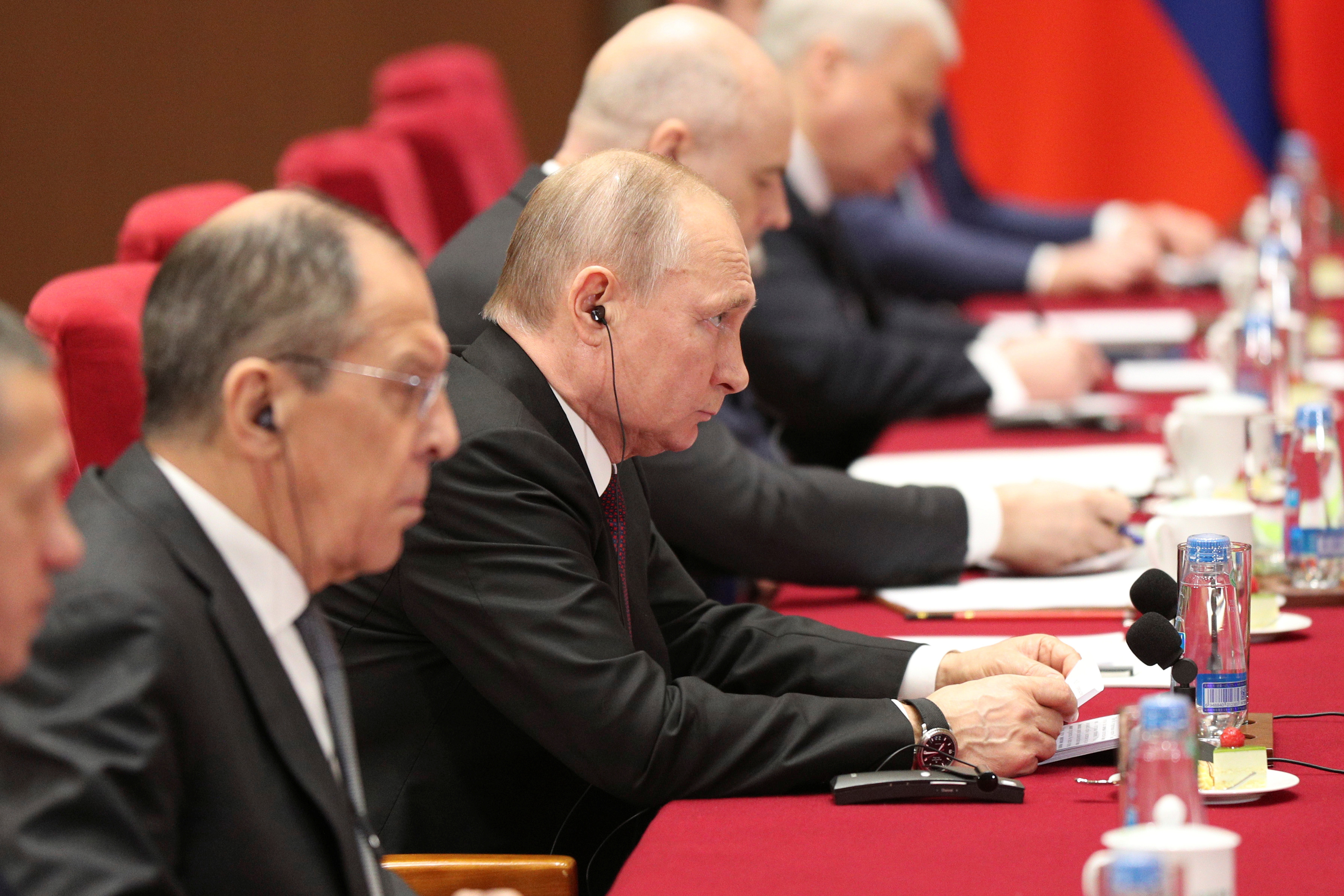
Russian President Vladimir Putin, center, listens the speech of Chinese President Xi Jinping, unseen, during a meeting at Friendship Palace in Beijing, China, on April 26, 2019. Kenzaburo Fukuhara/Pool via REUTERS
‘China assigns an insignificant place to Russia in its strategy.’ In the long term, the two countries are ‘likely to once again become irreconcilable rivals’.”
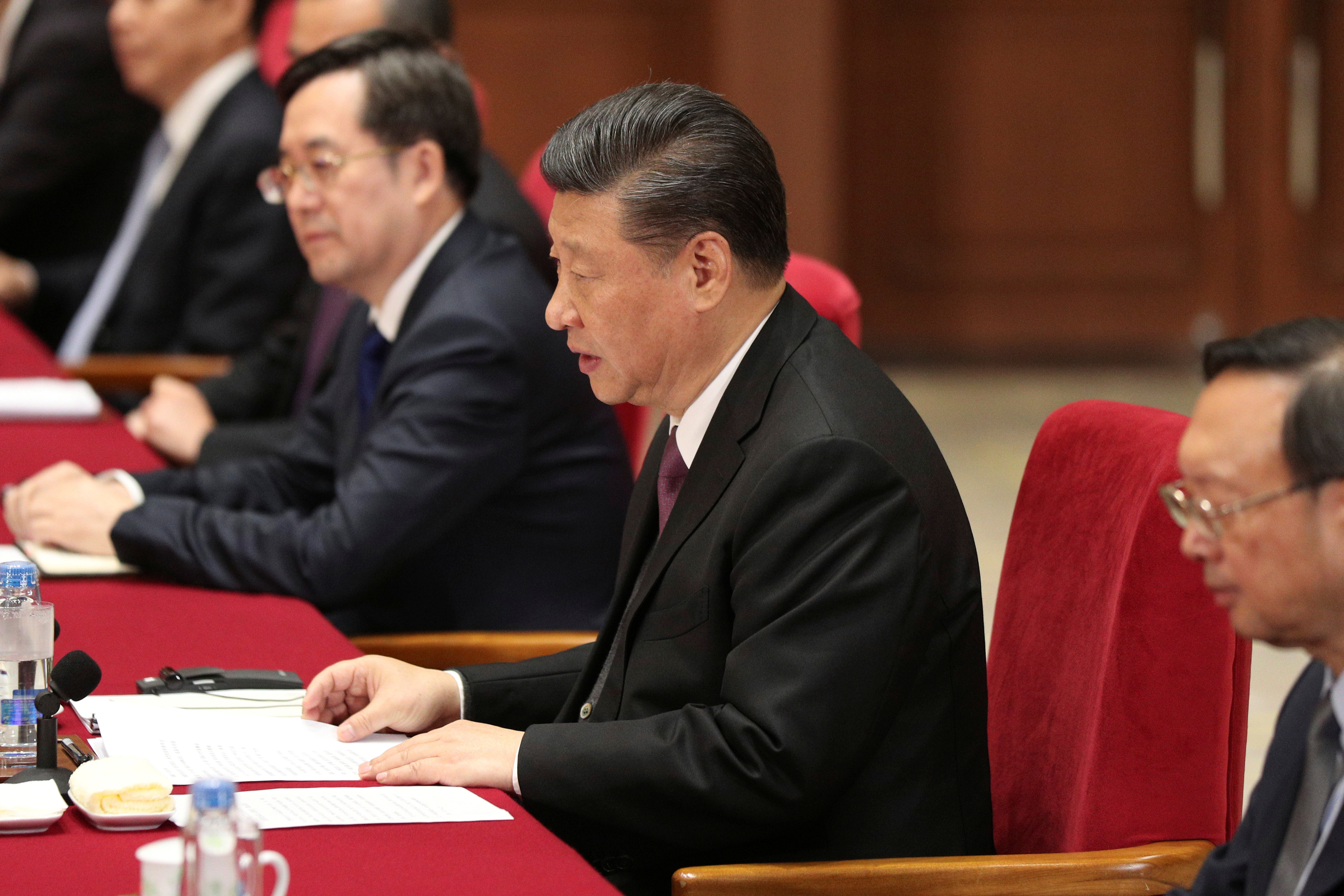
Chinese President Xi Jinping, center, talks with Russian President Vladimir Putin, unseen, during a meeting at Friendship Palace in Beijing, China on April 26, 2019. Kenzaburo Fukuhara/Pool via REUTERS
3.5 Transport corridors: Russia belted on railroads
Russia participates in China’s BRI. Yet Russians find that, as elsewhere, Chinese state-owned enterprises (SOEs) dominate BRI projects, permitting little local involvement. Chinese SOEs support Chinese government goals.79Hillman, The Emperor’s New Road; Ko Sakai, “Russia is in danger of being overrun by China’s Belt and Road: A new Eurasian order is in the making, with Beijing in the driver’s seat,” Nikkei Asia, August 17, 2019, https://asia.nikkei.com/Spotlight/Comment/Russia-is-in-danger-of-being-overrun-by-China-s-Belt-and-Road.
A reliable rail link from Asia to Europe could cut delivery times by three-fourths compared with sea shipping. The cost would be one-fifth of air freight.80Jing Men, “China-Europe Railway Connectivity: Opportunities and Challenges” in The “Roads” and “Belts” of Eurasia, ed. Alexander Lukin (London: Palgrave Macmillan, 2020): 131. China’s initial plans projected six economic corridors to Europe. Just one, China-Mongolia-Russia, traverses Russian territory. The Russian route is not a priority.81Igor Denisov, “Belt and Road Initiative: Evolution of China’s Approach” in The “Roads” and “Belts” of Eurasia, ed. Alexander Lukin (London: Palgrave Macmillan, 2020): 28.
Some Russia experts expressed concern that China would seek to monopolize the construction of all BRI transportation networks. Russia wants to upgrade the Trans-Siberian route and build a high-speed link between Moscow and Kazan. These plans compete with proposals from Central Asian countries favoring routes that allow them to profit from the traffic. Construction costs in all Central Asian nations are lower than in Russia. No Central Asian countries want to purchase Russian equipment; Chinese rolling stock is less expensive and capable of higher speeds. For economic, political, and technical reasons, China has favored Central Asian corridors.82Sergey Luzyanin, “Belt and Road Initiative: A View from Russia” in The “Roads” and “Belts” of Eurasia, ed. Alexander Lukin (London: Palgrave Macmillan, 2020): 60–62.
China’s plans prioritize rail routes to the west through Central Asia to the Caspian Sea and via Iran and Turkey to Europe. In addition to cost and speed, Russia’s 1,520-millimeter (mm) gauge tracks require that the wheel carriages be changed from the European (and Chinese) 1,435-mm width when entering and leaving Russia. The alternative is to transfer the cargo twice. Using containers would make transfers significantly faster, but Russian Railways resists shifting to containers.83Men, “China-Europe Railway Connectivity,” 142–43. These issues caused Russia to miss an opportunity to profit substantially from the global supply chain crisis resulting from the COVID-19 pandemic.
The former director of Russian Railways, Vladimir Yakunin, admits that failure to build the Kazan-Moscow high-speed rail line was due in part to cost and Russia’s inability to put together a strong coalition backing the plan. But China’s refusal to share technology and construction contracts was a major factor. Yakunin claims Chinese are happy to use partner country resources but have no interest in creating “points of growth” or “development belts” that could promote manufacturing in other countries.84Vladimir Yakunin and Maxim Vilisov, “Belt vs. Road: Eurasian Dilemma for Infrastructure Development” in The “Roads” and “Belts” of Eurasia, ed. Alexander Lukin (London: Palgrave Macmillan, 2020): 249–52.
Yakunin contrasts Chinese projects to Russia’s experience working with Siemens. The German company created partnerships with Russian firms and government officials, developing coalitions to produce successful results. The Sapsan high-speed line between Moscow and St. Petersburg works well. The line to Helsinki uses wheel carriages equipped with both track gauges, eliminating delays at the border. This system is suitable for light passenger trains, but less reliable for freight.
The high-speed “Eurasia” route from Beijing to Berlin via Moscow was deemed to be too expensive by the Chinese. Yet Chinese funding for rail lines through Central Asia has far exceeded support for rail infrastructure in Russia.85finanz.ru. “Kitai ob’iavil nerentabel’nym ‘shelkovyi put’’ cherez Rossiiu v Evropy [China declared the ‘Silk Road’ route through Russia to Europe to not be profitable.]” June 20, 2018, https://www.finanz.ru/novosti/aktsii/kitay-obyavil-nerentabelnym-shelkovy-put-cherez-rossiyu-v-evropu-1027247658.
Russians continue to seethe over insufficient use of the Trans-Siberian route and Chinese refusal to support a high-speed rail link between Moscow and Kazan. Russian analysts determined that the Kazan project could pay for itself within twenty-two years, even without government grants. Russian negotiators also suggested the Silk Road Fund could support the rail link regardless of profitability due to the importance of creating a single economic space.86Vasily Marinin, “Kitaiskii raschet: kak dorogu cherez Rossiiu v Evropu prizanli ubytochnoi [Chinese calculation: How the road through Russia to Europe was deemed unprofitable],” RBC Daily, June 20, 2018, https://www.rbc.ru/business/20/06/2018/5b28c3059a794751862a94fb.
Two Central Asian analysts, Ruslan Izimov and Zamira Muratalieva, are more blunt, stating that “China assigns an insignificant place to Russia in its strategy.” In the long term, the two countries are “likely to once again become irreconcilable rivals.”87Ruslan Izimov and Zamira Muratalieva, “China’s Belt and Road Initiative: Impacts and Effects for Central Asia” in The “Roads” and “Belts” of Eurasia, ed. Alexander Lukin (London: Palgrave Macmillan, 2020): 95–6.
Chinese and Russian economic policy makers have differing views not only regarding collaborative transportation projects, but also about reordering the global financial system. Announcements about dethroning the dollar as the global reserve currency have created alarm, yet de-dollarization is a good microcosm of the Sino-Russian economic partnership. Effusive proclamations have produced modest results.
3.6 Dumping the dollar: Russia pays, China gains
For some leaders in Russia and China, the 2008 financial crisis revived communist-era conviction that Euro-Atlantic capitalist domination in the global economy was coming to an end. Then People’s Bank of China governor Zhou Xiaochuan published a paper in March 2009 proposing that the International Monetary Fund (IMF) create a system to replace the dollar as the world’s reserve currency. Little action was taken at the time.88David Barboza, “China Urges New Money Reserve to Replace Dollar,” New York Times, March 23, 2009, https://www.nytimes.com/2009/03/24/world/asia/24china.html.
A yuan-ruble trade system established on the Moscow market in 2010 amounted to “just a bit more than nothing.” The major explanations for lack of progress involve the currencies themselves. China’s yuan is not fully convertible. The ruble is not considered stable, and partners selling their goods and services to Russia for rubles must purchase something from Russia or risk losses in converting the rubles.89finanz.ru, “Kitai otverg torgovliu s Rossiei za rubli [China rejected trade with Russia in rubles],” January 31, 2018, https://www.finanz.ru/novosti/valyuty/kitay-otverg-torgovlyu-s-rossiey-za-rubli-1014696060.
De-dollarization became a priority in response to Crimea/Ukraine sanctions. When Putin and Xi met in May 2014, VTB and the Bank of China agreed to use domestic currencies in future payments. The de-dollarization effort has been a highly publicized talking point but has not produced a significant shift to using national currencies.
De-dollarization thus far consists overwhelmingly of replacing dollars with euros.90Badmaeva, “Kitai podderzhal sanktsii.” This remains a priority despite Russia prohibiting imports of European food and medicine.
The heads of the Russian and Chinese central banks in November 2015 agreed to advance reciprocal use of national currencies in accounting. In December 2015, they signed a MOU for the Central Bank of Russia to include the yuan in its basket of reserve currencies.91Turitsyn and Turitsyn, “Rossiisko-kitaiskoe sotrudnichestvo,” 128.
During a trip to China in June 2016, Putin sought to reinforce the MOU and encourage more Chinese investment. A few Chinese banks expanded their activity, most notably Harbin Bank, raising its total investment in Russia from ¥5.4 billion to ¥8.75 billion (about $1.3 billion).92Ibid., 129. This is one of many instances where implementing the projects described in MOUs and bilateral agreements has required top-level intervention. It also illustrates the limits of even highest-level support.
The CBR reported in 2017 that some 88 percent of Russian exports to China were priced in dollars, as were 73.6 percent of Russian imports from China. The Chinese in 2017 based just 3.8 percent of imports from Russia on the ruble, a slight decline from the 3.9 percent in 2013, before sanctions were introduced.93Ibid., 130.
Intervention by Putin and Xi, along with Chinese reaction to then US president Donald J. Trump’s tariffs, stimulated more rhetoric about cooperation. At the Eastern Economic Forum in September 2018, VTB and the China Development Bank signed a credit agreement for ¥12 billion ($1.75 million).94Ibid., 130. Designed to encourage Chinese commercial banks to become more active in Russia, results continued to disappoint.95Vita Spivak. “Can the Yuan Ever Replace the Dollar for Russia?” Carnegie Moscow Center, August 2, 2021, https://carnegie.ru/commentary/85069.
Russian investments in Chinese currency repeatedly have produced short-term losses. Russia purchased $3.9 billion in the third quarter of 2018; $8 billion in the fourth quarter; and $11 billion in the first quarter of 2019. After new US sanctions in the spring of 2020, Russia bought a record $44 billion of yuan. Russia paid a substantial price. Trump’s trade war caused the yuan to drop from about ¥6.2–¥6.4 to ¥7 to the dollar. Russia’s loss was calculated at $5 billion.96finanz.ru, “TsB perevel 15% rezervov v iuan’ i poterial $5 mlrd [CB put 15% of its reserves in Yuan and lost $5 bn],” January 9, 2019, https://www.finanz.ru/novosti/valyuty/cb-perevel-15percent-rezervov-v-yuan-i-poteryal-$5-mlrd-1027856237.
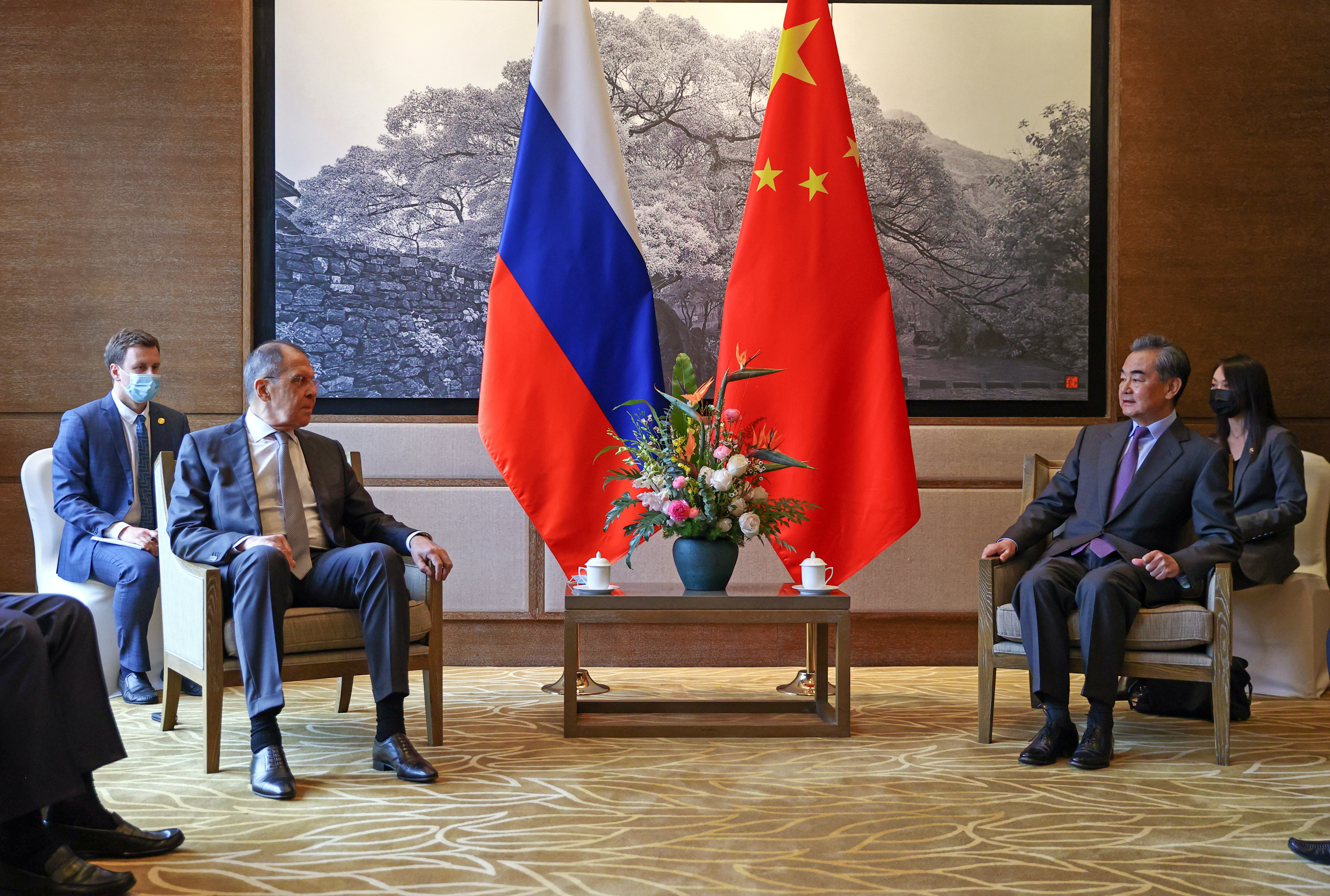
Russia’s Foreign Minister Sergei Lavrov and China’s Foreign Minister Wang Yi (L-R front) meet for talks. Russian Foreign Ministry/TASS via REUTERS
Russia invested nearly 15 percent of its currency reserves in yuan, reducing holdings in dollars. Nevertheless, at the end of 2018, not long after Xi presented Putin with China’s new “friendship” award, China rejected an agreement to reduce the role of dollars in bilateral trade. The Chinese also cut back on investment in Russia, refusing to help finance the Amur gas processing plant.97finanz.ru, “Kitai otkazalsia finansirovat’ novyi megaproekt ‘Gazprom’ za $14 mlrd [China refused to finance the new Gazprom $14 bn megaproject],” January 29, 2019.
Contradictions between effective economic policy and geopolitical goals were clearly apparent by the end of 2019. Russia purchased some additional US government debt. Russian Finance Minister Anton Siluanov explained that this was due to the economic situation: computer models indicated the purchase was sound economic policy. Siluanov added that it is not possible to base investment policy purely on politics.98Novye izvestiia. “Rossiia vnov’ uvelizhila vlozheniia v gosdolg SShA [Russia again increased investment in USA government debt],” December 17, 2019, https://newizv.ru/news/economy/17-12-2019/rossiya-vnov-uvelichila-vlozheniya-v-gosdolg-ssha. This purchase brought Russian holdings to a bit over $6 billion, a marked reduction from the high point of $170 billion in 2010. China, at $1.251 trillion, continued to be second to Japan in holdings of US government debt.99lenta.ru. “Rossiia vlozhila eshche milliard dollarov v gosdolg SShA [Russia invested another billion dollars in USA government debt],” February 17, 2021, https://lenta.ru/news/2021/02/17/gosdolg/.
During a March 2021 visit to China, Russian Foreign Minister Sergey Lavrov called for more efforts to reduce using the dollar in global trade. Russia’s ambassador to China, Andrey Denisov, stated that China had become Russia’s largest trading partner, with bilateral trade reaching $107 billion. Denisov claimed that 25 percent of reciprocal trade was being conducted in national currencies, compared with just 2 percent to 3 percent in 2014.100Laura Zhou, “Russia, China can reduce sanctions risks by moving away from US dollar, Sergey Lavrov says,” South China Morning Post, March 22, 2021, https://www.scmp.com/news/china/diplomacy/article/3126466/russia-china-can-reduce-sanctions-risks-moving-away-us-dollars.
Some Russian press coverage of Lavrov’s visit was less upbeat. Lavrov elicited no Chinese willingness to take joint action in response to sanctions. Efforts to reduce dependence on the dollar remained mostly in the form of MOUs. In the total bilateral trade of $107 billion in 2020, just $3.3 billion was in national currencies. That is closer to 3 percent than the 25 percent claimed by Russia’s ambassador.101finanz.ru. “Kitaiskie banki skazali ‘net’ rossiiskomu SWIFT [Chinese banks said ‘no’ to Russia’s SWIFT],” April 6, 2021, https://www.finanz.ru/novosti/valyuty/kitayskie-banki-skazali-net-rossiyskomu-swift-1030276135.
Another option that could reduce reliance on the dollar is digital currency. The Chinese, Iranians, and Russians are developing their own digital currencies, creating alarm in some circles that the dollar’s role as the global reserve currency is under threat. Yet challenges in using digital currencies remain significant. Mushrooming private systems have generated a slew of options. None has managed to establish value beyond what buyers and sellers determine the price should be on any given day.102Eswar S. Prasad, The Future of Money: How the Digital Revolution Is Transforming Currencies and Finance, (Cambridge, MA: Belknap Press of Harvard University, 2021).
Obstacles to financial cooperation emanate from both sides. Russia fears that Chinese dominance in BRI allows them to play a growing role in Central Asia, with greater use of the yuan enhancing China’s influence. The relative stability of the yuan’s value makes it attractive for Russian exporters, while the ruble’s weakness makes it much less desirable for Chinese selling to Russia.103The weaker ruble has resulted in less willingness among Chinese to work in Russia. If in the 1990s and early 2000s Chinese laborers could spend two or three years in Russia and earn enough to start a business in China, the depreciation of the ruble (from around $30 to the current level of about $70 to $75) makes this impossible. Chinese firms now hire local Russians or bring in North Koreans for low-wage labor.
Putin and Xi discussed de-dollarization by telephone in 2021. Progress remains difficult: “When it comes to money, it seems that the lofty ambitions of political leaders are no match for the insufficient liberalization of the Chinese financial system and the unwieldy Russian economy beset by sanctions,” Vita Spivak writes.104Spivak, “Can the Yuan Ever Replace the Dollar for Russia?”
Russia and China have achieved no greater success in creating new international payment systems to replace SWIFT.
3.7 Alternatives to SWIFT
Russia and China have discussed ways to diminish the threat of the United States and Europe weaponizing the SWIFT international payments system. When excluding Russia from SWIFT was proposed following annexation of Crimea in 2014, some Russian businessmen and legislators called it the equivalent of declaring war.
The Central Bank of Russia began developing its own financial payments system (sisteme peredachi finansovykh soobshchenii or SPFS) as an alternative to SWIFT in 2014. Threats to exclude Russia from the SWIFT system convinced Russian Deputy Finance Minister Aleksei Moiseev that Russia needed a fallback option. The new system was first tested in December 2014. CBR head Elvira Nabiullina informed Putin that the Russian system was ready in March 2017.105Rossiia Segodnia, “Desiat’ zarubezhnykh bankov podkliuchilis’ k rossiiskomu analogu SWIFT (Ten foreign banks have joined the Russian analog to SWIFT],” February 13, 2020, https://1prime.ru/finance/20200213/830939366.html.
In November 2019, Siluanov announced plans for Russia and China to establish a new international payments system. Thus far this remains in the realm of aspiration.106Seymur Mammadov, “Why the trend of de-dollarization is inevitable,” China Daily, November 21,2019, https://www.chinadaily.com.cn/a/201911/21/WS5dd5eaf0a310cf3e35578e28.html.
By February 2020, more than 400 Russian banks had joined SPFS, exceeding the number enrolled in SWIFT.107TASS, “The share of transfers using the Russian analog to SWIFT rose 1.8 times,” February 18, 2021, https://tass.ru/ekonomika/10731513. The system was being used for about 20 percent of internal Russian settlements. While twenty-three foreign organizations are contractually “included” in SPFS, only twelve currently use it.108Ibid.; Natal’ia Il’ina, “Sviazuiushchee okno: rossiiskii analog SWIFT primet 30% trafika k 2023-mu [Communication window: The Russian analog to SWIFT willl handle 30% of the traffic in 2023],” Izvestiia, April 15, 2021, https://iz.ru/1151473/natalia-ilina/sviazuiushchee-okno-rossiiskii-analog-swift-primet-30-trafika-k-2023-mu. The Chinese government has not prevented Chinese banks from joining the Russian system, but neither has it encouraged them. Only one Chinese bank, the Bank of China, is a member.
Russian bank use of SPFS nearly doubled in 2020, with monthly internal transfers reaching about 2 million rubles (about $27,000). To encourage users, the CBR sought to lower costs and streamline integration with other payment systems. Price reductions encouraged Russian banks to expand their use of SPFS for domestic settlements. Much of the cost of the system is now paid by Russian state banks.109Ibid.
Rather than Sino-Russian cooperation producing a convergence of the two economies, Russia increasingly is “following the Chinese path.” Simply proclaiming agreements at the highest level will not “undermine the USA financial hegemony or change the world financial system.”110Turitsyn and Turitsyn, “Rossiisko-kitaiskoe sotrudnichestvo,” 133.
section four
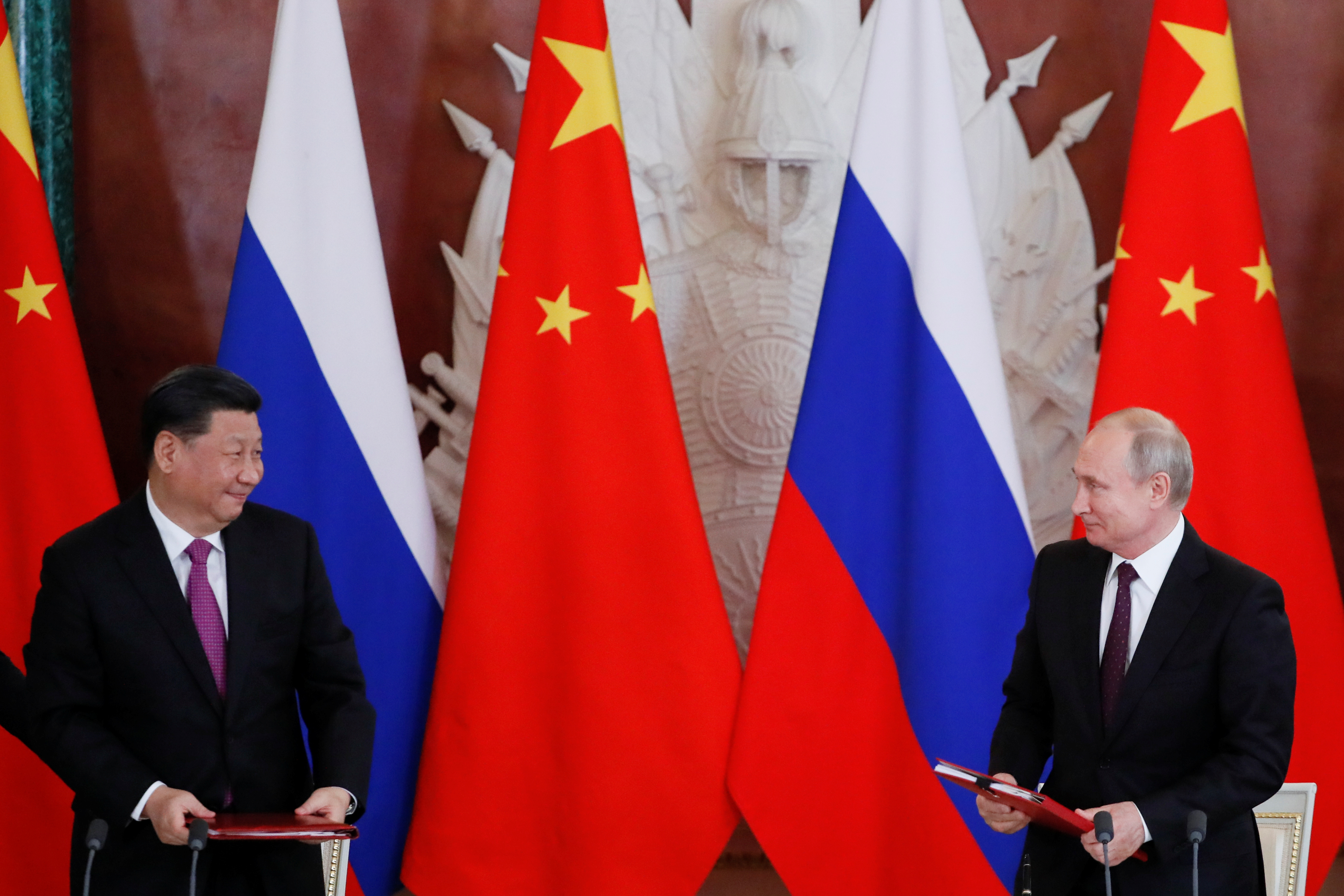
Russian President Vladimir Putin and his Chinese counterpart Xi Jinping look on during a signing ceremony in Moscow, Russia, June 5, 2019. REUTERS/Evgenia Novozhenina
Conclusion
An axis of collusion/connivance
Problems in the Sino-Russian economic relationship magnify other ongoing difficulties. While still in some ways an “axis of convenience,” the relationship is not a successful strategic partnership.111Verlin and Gabuev, “My ego teriaem?” The ties between Putin and Xi increasingly appear to be an axis of collusion/connivance.
Putin and Xi connive to undermine the Euro-Atlantic vision of a globalized world dominated by market democracies. They collude to convince everyone that a relationship based overwhelmingly on what two leaders can do to make the world safer for autocrats represents long-term collaboration between two large nations with different trajectories and interests.112Amber Wang, “China-Russia alliance can never work, despite US rivalry, observers say,” South China Morning Post, March 27, 2021, https://www.scmp.com/news/china/diplomacy/article/3127253/china-russia-alliance-can-never-work-despite-us-rivalry. They connive to reduce the role of the dollar in the global economy, but only Putin is brave or desperate enough to pay the price.
Putin connives to elicit financial and technological assistance from China while insisting Russia is an equal partner. Xi does his best to soothe Russian egos while Chinese officials and businessmen consistently frustrate Russian expectations. In 1997, Jiang Zemin and Bill Clinton announced they would pursue developing a “constructive strategic partnership.” Putin might want to reflect on how that turned out. It may be that the partnership depends on the continued ability of Putin and Xi to change the rules to remain in power.
In Moscow, officials connive to portray Chinese rebuffs as victories. The most recent Chinese rejection of Russia’s repeated calls for a military alliance came during Lavrov’s visit to China in April 2021. Achieving neither investment to help Russia modernize nor a military alliance, Lavrov returned to Moscow describing Sino-Russian relations as something far more significant than a mere military alliance.113finanz.ru, “Kitaiskie banki skazali.”
Xi and Putin are doing what two leaders can do to create a partnership from the top down. It has been working moderately well, though hardly at the level of an alliance, in the realms of diplomacy and military exercises. Less cooperation exists in economic and social-cultural realms. Fault lines, including differences in diplomatic and geostrategic interests, disappointing returns from the economic relationship, local protests over Chinese environmental and other abuses, and discontent among elites in both countries, point to significant challenges.
Alexander Lukin edited an invaluable book on the Sino-Russian relationship.114Lukin, The “Roads” and “Belts” of Eurasia In a July 2021 interview with Global Times, he emphasized the ways Russian and Chinese national interests correspond.115Wenting Xie and Yunyi Bai, “US cannot break China-Russia strategic partnership as it’s based on national interests: Alexander Lukin,” Global Times, July 12, 2021, https://www.globaltimes.cn/page/202107/1228458.shtml. Yet in September 2021, Lukin published an article asking if the cooperation had peaked.116See extended footnote 117. He is correct that the relationship is past its peak. The data presented here suggest that real support for the partnership always emanated from the “peak”—the two presidents. Both will find it increasingly difficult to maintain the collusion in the face of growing economic challenges magnified by the COVID-19 pandemic.
Policy
Groups in elites and society in Russia and China with reservations about the partnership should be encouraged. The discussion of concerns among analysts in both countries noted above could be greatly expanded. Neither Russian nor Chinese society sees the other as its preferred civilizational partner. Exploiting fragilities begins with promoting maximum public discussion of environmental, economic, and societal concerns. Subtle efforts should be made to raise the same issues in interactions with diplomatic, military, and academic interlocutors from both countries.
Many discussions of how the United States could respond focus on separating Russia from China. A more promising approach would be to seek to restore the Sino-US relationship to what it was prior to China’s “Xi change.” While Xi intensified policy shifts initiated under his predecessor, Hu Jintao, the direction was not inevitable. In the first decade of Deng Xiaoping’s reforms, there were four periods of reversal. Each time, economic contraction helped coalitions of groups benefitting from China’s opening to revive reform policies.117David Zweig characterizes the groups battling to continue reform and openness as “development communities.” David Zweig, Internationalizing China: Domestic Interests and Global Linkages, (Ithaca, NY, and London: Cornell University Press, 2002): 136-41.
China’s economy now faces serious difficulties. The struggle over Xi’s effort to serve a third term may present the last opportunity to put China back on the path that made its economic success possible.118Willy Wo-Lap Lam, “Xi Facing Opposition on Different Fronts in Run-Up to Key Party Plenum,” China Brief (Jamestown Foundation), September 23, 2021, https://jamestown.org/program/xi-facing-opposition-on-different-fronts-in-run-up-to-key-party-plenum/ Chinese who question the wisdom of abandoning term limits should be encouraged.119Elizabeth Plantan, “Authoritarian Politics and Environmental Activism in Russia and China,” PhD Dissertation, Cornell University (2018).
Nascent efforts to foster bottom-up linkages between environmental groups confronting climate change challenges in both societies should be encouraged.
One of the strongest signals the United States could send would be to sanction Novatek, complicating its LNG exports to China. The company is seeking additional funding. Stronger restrictions on Russian oligarch Gennady Timchenko’s economic activity would affect Putin directly.120Timchenko has consistently been identified as one of the individuals who “holds” Putin’s assets. After Putin’s younger daughter Ekaterina Tikhonova (she uses her grandmother’s name) married Kirill Shamalov Timchenko arranged a series of financial transactions that resulted in the couple becoming billionaires. Stephen Grey, Andrey Kuzmin and Elizabeth Piper, “Putin’s daughter, a young billionaire and the president’s friends,” Reuters, Nov. 10, 2015. https://www.reuters.com/investigates/special-report/russia-capitalism-daughters/.
Finally, despite the serious concern voiced in U.S. reports about China’s growing nuclear weapons capacity, Russia is the country that has consistently evoked its nuclear arsenal as a guarantee against Chinese territorial aggression. China’s growing nuclear weapons capacity will change correlation of forces with Russia.121Aleksandr Gol’ts, “Mladshii brat po oruzhiiu. Rossia i Kitai konsolidiruiut voennye sviazi. No rol’ pervoi skripki v duete, pokhozhe za Pekinom (Younger brother in armaments. Russia and China are consolidating their military ties. But the role of first violin in the duet, it seems, belongs to Beijing),” Republic, Aug. 30 (2021). https://republic.ru/posts/101450 This deserves greater attention.
Acknowledgements
I am grateful for valuable comments on early drafts of the paper from Marjorie Mandelstam Balzer, Chris Bort, Dan Fried, Thane Gustafson, Phil Hanson, Robert Otto, Maria Repnikova, Bill Rosenberg, Valerie Sperling, and David Wolff. None of them is responsible for errors or inaccuracies that remain. I am deeply appreciative for the assistance from the Atlantic Council editorial and publications staff.
About the author

Dr. Harley Balzer
Professor Emeritus
Georgetown University
Harley Balzer retired in July 2016 after 33 years in the Department of Government, School of Foreign Service, and associated faculty member of the History Department at Georgetown University. He was founding director of the Center for Eurasian, Russian, and East European Studies from 1987-2001. Prior to Georgetown he taught at Grinnell College and Boston University, and held post-doctoral fellowships at Harvard’s Russian Research Center and the MIT Program in Science, Technology and Society. In 1982-83 he was a congressional fellow in the office of Congressman Lee Hamilton, where he helped secure passage of the Soviet-East-European Research and Training Act (Title VIII).
In 1992-93 Dr. Balzer served as executive director and chairman of the board of the International Science Foundation, George Soros’s largest program to aid the former Soviet Union. From 1998 to 2009, he was a member of the Governing Council of the Basic Research and Higher Education (BRHE) Program, funded by the MacArthur Foundation, Carnegie Corporation, and Russian Ministry of Education. BRHE established 20 Research and Education Centers at Russian Universities, and was significantly expanded by the Russian government using their own resources.
His publications have focused on Russian and Soviet history, Russian politics, Russian education, science and technology, and comparative work on Russia and China.

The Eurasia Center’s mission is to promote policies that strengthen stability, democratic values, and prosperity in Eurasia, from Eastern Europe in the West to the Caucasus, Russia, and Central Asia in the East.
Extended footnotes
Ex.F.2
Bobo Lo, Axis of Convenience: Moscow, Beijing, and the New Geopolitics (Washington, DC: Brookings Institution, 2008); Stephen Blank, “China and Russia: A Burgeoning Alliance,” Proceedings (US Naval Institute), March 2020, www.usni.org/magazines/proceedings/2020/march/china-and-russia-burgeoning-alliance; Angela Stent, Russia and China: Axis of revisionists?, Brookings Institution, February 2020, https://www.brookings.edu/research/russia-and-china-axis-of-revisionists/; An Emerging China-Russia Axis? Implications for the United States in an Era of Strategic Competition, US-China Economic and Security Review Commission, 116th Cong. (2019) (testimony of Robert Sutter, professor of practice of international affairs, Elliott School of International Affairs, George Washington University); David Shambaugh, “China‑Russia Relations: The New Axis,” China-US Focus, June 26, 2019. www.chinausfocus.com/article/2019/0626/18482.html; Elizabeth Wishnick, “Sino-Russian Consolidation at a Time of Geopolitical Rivalry,” China Leadership Monitor, March 1, 2020, https://www.prcleader.org/elizabeth-wishnick; Cf. Bobo Lo, “Introduction” in Sino-Russian Relations in the 21st Century, eds. Jo Inge Bekkevold and Bobo Lo (London: Palgrave Macmillan, 2019), 1–17. https://www.palgrave.com/gp/book/9783319925158.
Ex.F.7
Edward Lucas, Jake Morris, and Corina Rebegea, Information Bedlam: Russian and Chinese Information Operations During Covid-19, Center for European Policy Analysis, March 15, 2020, https://cepa.org/information-bedlam-russian-and-chinese-information-operations-during-covid-19/; Franklin Holcomb, Countering Russian and Chinese Cyber-Aggression: Prospects for Transatlantic Cooperation, Center for European Policy Analysis, December 4, 2020, https://cepa.org/countering-russia-and-chinese-cyber-aggression/. Cyberwarfare has not been confined to “enemies.” A serious hack of the Russian security service (FSB) in 2021 was initially attributed to the U.S. by Russian intelligence agencies. A subsequent analysis found that the operation most likely was carried out by a Chinese group, ThunderCats, responsible for previous hacks in South-East Asia and Russia. Juan Andrés Guerrero-Saade, “ThunderCats Hack the FSB: Your Taxes Didn’t Pay For This Op,” Sentinel Labs, June 8, 2021. https://www.sentinelone.com/labs/thundercats-hack-the-fsb-your-taxes-didnt-pay-for-this-op/
Ex.F.9
Alla Hurska, “The Motor Sich Factory and Its Covert Ties to Russia,” Eurasia Daily Monitor, 16 (128) (September 19, 2019), https://jamestown.org/program/the-motor-sich-factory-and-its-covert-ties-to-russia/; Jack Laurenson, “Business Update—Feb. 17: Ukraine may cancel Motor Sich acquisition, increase wages, spend $4.6 billion on roads,” Kyiv Post, (2020) https://www.kyivpost.com/business/business-update-feb-17-ukraine-may-cancel-motor-sich-acquisition-increase-wages-spend-4-6-billion-on-roads.html; UAWire, “China on purchase of Ukraine’s Motor Sich defense plant: We’ve snatched ‘pearl of engine building’ away from US and Russia,” December 18, 2019, https://www.uawire.org/china-on-purchase-of-ukraine-s-motor-sich-defense-plant-we-ve-snatched-pearl-of-engine-building-away-from-us-and-russia; Jon (Yuan) Jiang and Vladimir Legenko, “The Battle for Motor Sich: A Sino-American Dispute in Ukraine, China Brief (Jamestown Foundation) 19 (November 19, 2019), https://jamestown.org/program/the-battle-for-motor-sich-a-sino-american-dispute-in-ukraine/.
Ex.F.15
Eugene Rumer and Richard Sokolsky, “Chinese-Russian Defense Cooperation Is More Flash Than Bang,” Carnegie Endowment for International Peace, June 17, 2021, https://carnegieendowment.org/2021/06/17/chinese-russian-defense-cooperation-is-more-flash-than-bang-pub-84787. Travel writer Colin Thubron stumbled into the Vostok 2018 joint maneuvers while making his journey along the Amur River. The exercise involved 300,000 Russian and 3,200 Chinese troops. After hearing the rumble of equipment and the echo of artillery shelling, he wandered through the (empty) Russian and Chinese camp sites. There was no sign of the 500 military police patrolling the area on horseback. He describes the Chinese camp: “the soldier’s tents are no more than half-open shelters of coarse canvas strung over wooden frames.” His conclusion: “this is less a military exercise than a political warning to the West.” Colin Thubron, The Amur River: Between Russia and China (New York: Harper, 2021): 60.
Ex.F.27
Aleksandr Moretskii, Sergei Uianaev, and Tlesh Mamakhatov, “Rossiisko-Kitaiskie otnosheniia v novuiu epokhu: Novye problemy–novye vektory vzaimodesistviia [Russia-China relations in a new era: New problems–new vectors of joint activity],” Problemy dal’nogo vostoka 4 (2021): 5–25, https://www.elibrary.ru/item.asp?id=46548772; Ishikawa, “Russia’s cozy economic ties.”
Ex.F.30
This episode requires some context. On March 1, 2019, Anastasiia Bashkatova published an article about problems in the Chinese economy and how these could have a negative impact on Russia. Anastasiia Bashkatova, “Kitai zarazit rossiiskuiu ekonomiku krizisom [China is infecting Russia’s economy with a crisis],” Nezavisimaia Gazeta 44 (March 1) (2019): 1. This apparently provoked Gou’s visit. Perhaps in an attempt to ameliorate tensions, on March 4, 2019, the paper ran an article by Chinese Ambassador to Russia Li Hui claiming that cooperation between China and Russia was now in “the fast lane.” Li Hui, “Sotrudnichestvo Pekina i Moskvy vyshlo na ‘skorostnuiu magistral’ [Cooperation between Beijing and Moscow has moved into the ‘fast lane’],” Nezavisimaia Gazeta, 46, March 4, (2019): 3. https://www.ng.ru/kartblansh/2019-03-03/3_7522_kart.html. Nezavisimaia gazeta editors published an editorial about repeated threats to the paper by representatives of the Chinese Embassy in Moscow. “Redaktsiia “Nezavisimoi gazety”, “Kitaiskii diplomat ugrozhaet zhurnalistu “NG” popadaniem v chernye spiski (A Chinese diplomat is threatening ‘NG’ journalist with being blacklisted),” Nezavisimaia gazeta 47 March 5 (2019): 2. https://www.ng.ru/world/2019-03-04/2_7523_china.html.
Ex.F.117
Alexander Lukin, “Have We Passed the Peak of Sino-Russian Rapprochement?” Washington Quarterly, 44 (3) (2021): 155–173, https://doi.org/10.1080/0163660X.2021.1970904. Lukin, who teaches at Russia’s elite higher education institution for diplomats, and Pavel Baev, a senior researcher at the Oslo International Peace Research Institute who frequently writes for the Jamestown Monitor both suggested at about the same time that the relationship had peaked. Pavel Baev, “Russia and China: A Mutually Exaggerated Strategic Partnership,” China Brief (Jamestown Foundation), 21 (20), Oct. 22, 2021. https://jamestown.org/program/russia-and-china-a-mutually-exaggerated-strategic-partnership/
Image: Russian President Vladimir Putin and his Chinese counterpart Xi Jinping look on during a signing ceremony in Moscow, Russia, June 5, 2019. REUTERS/Evgenia Novozhenina